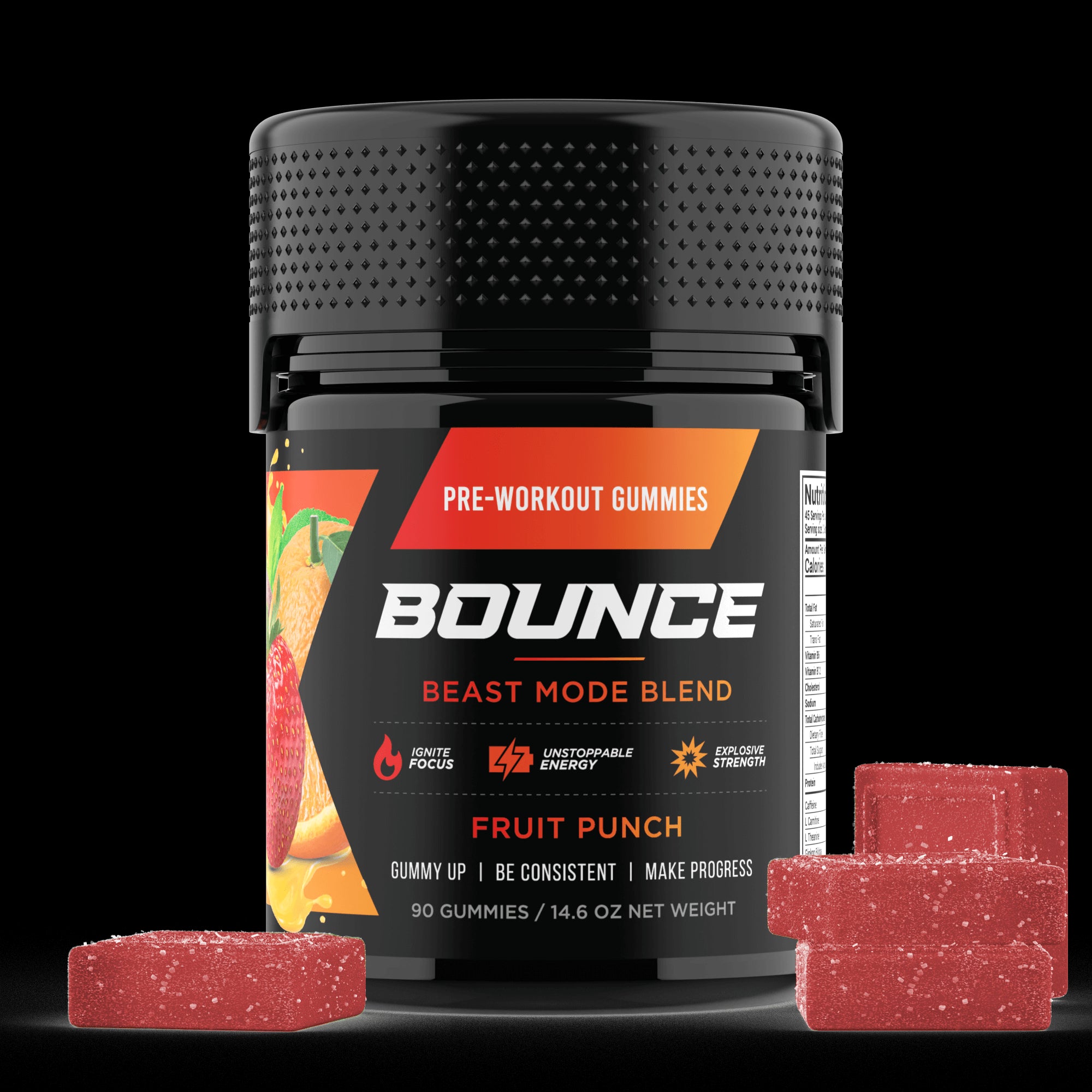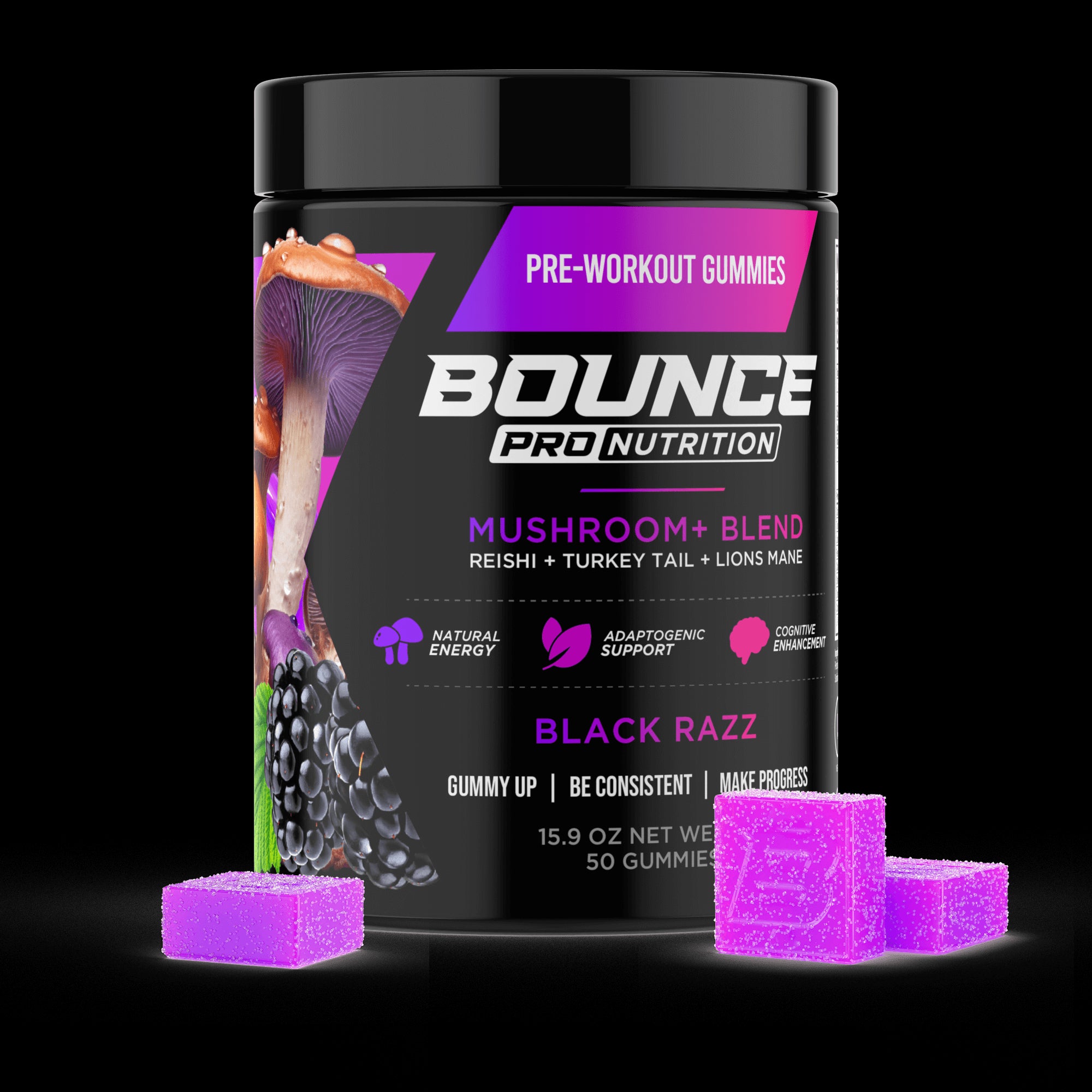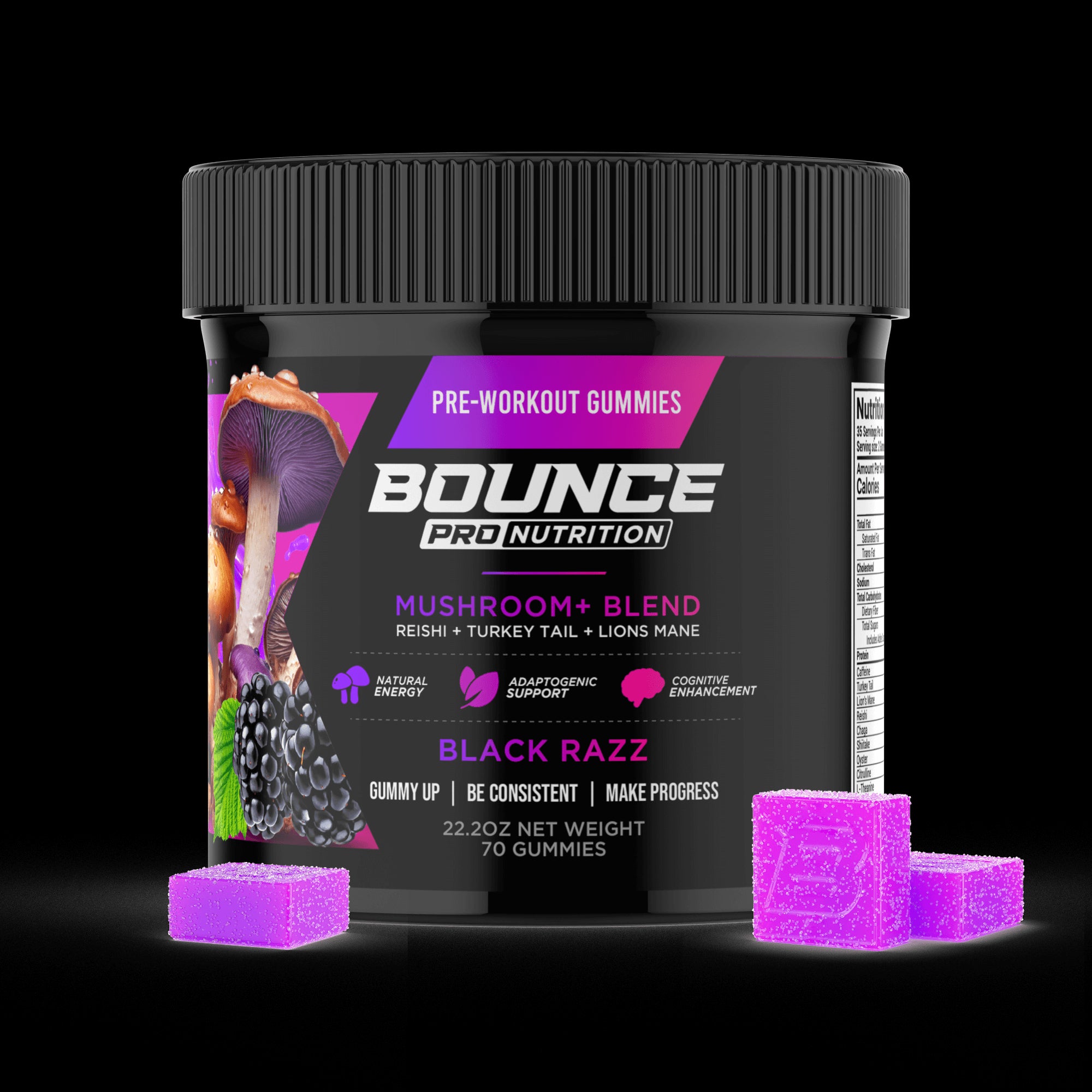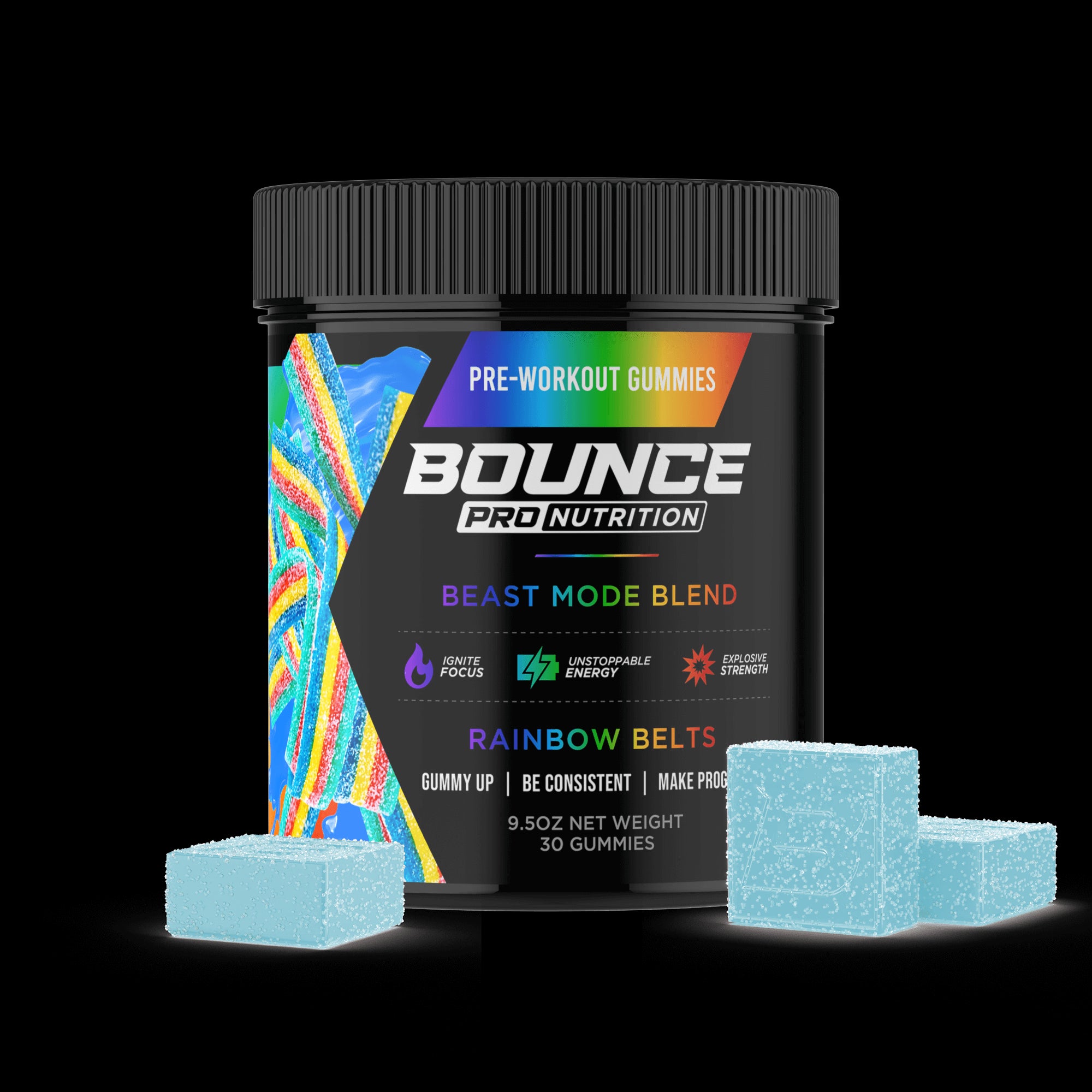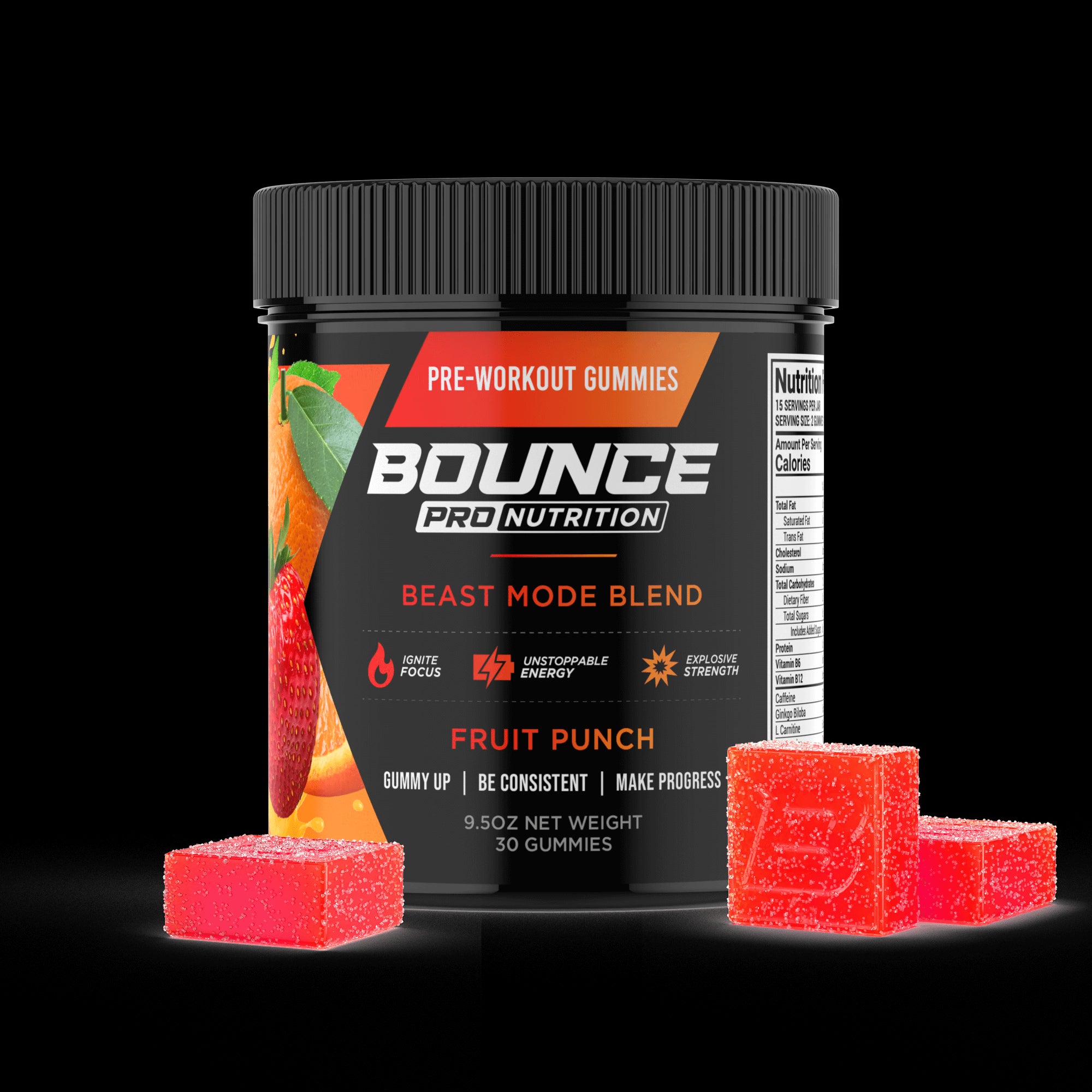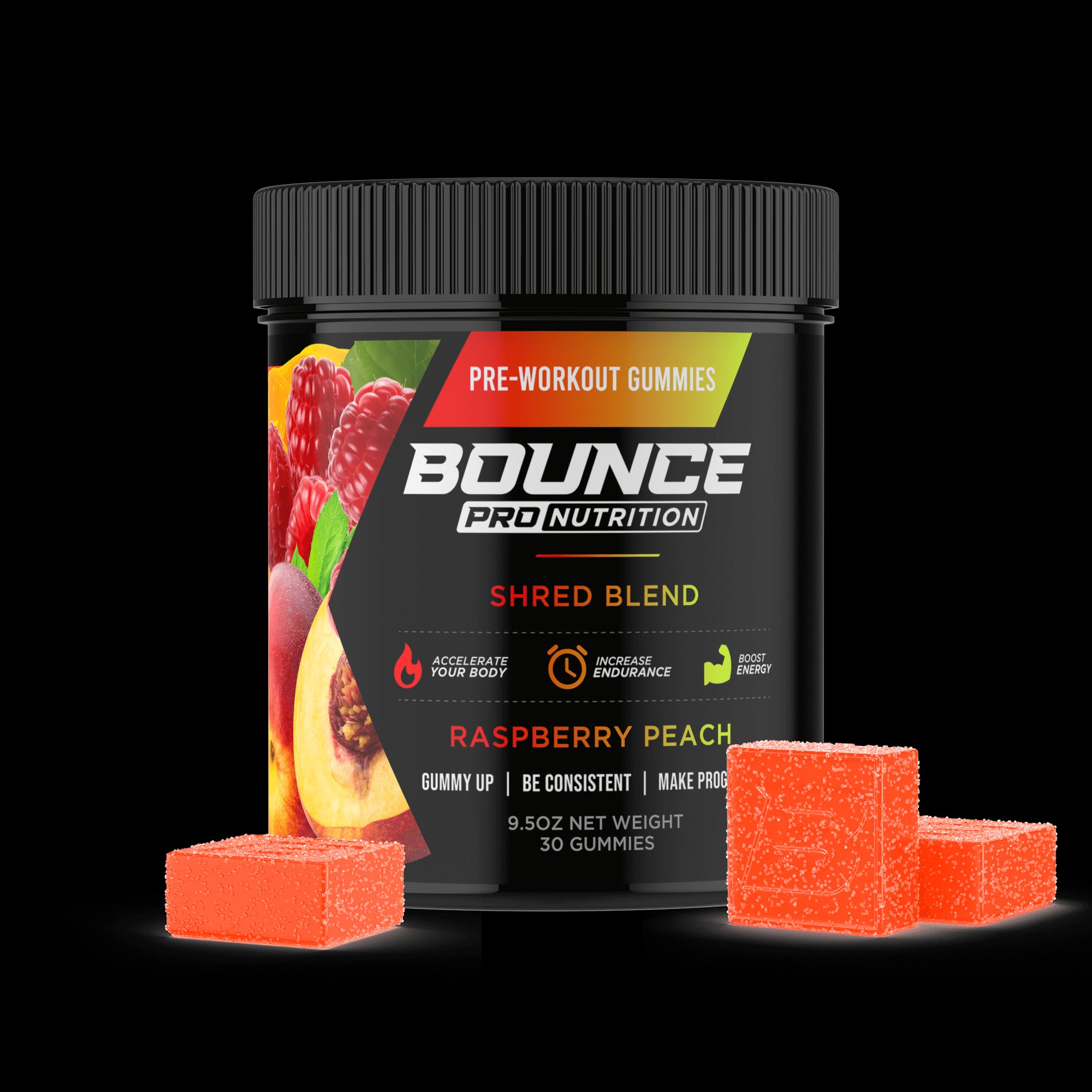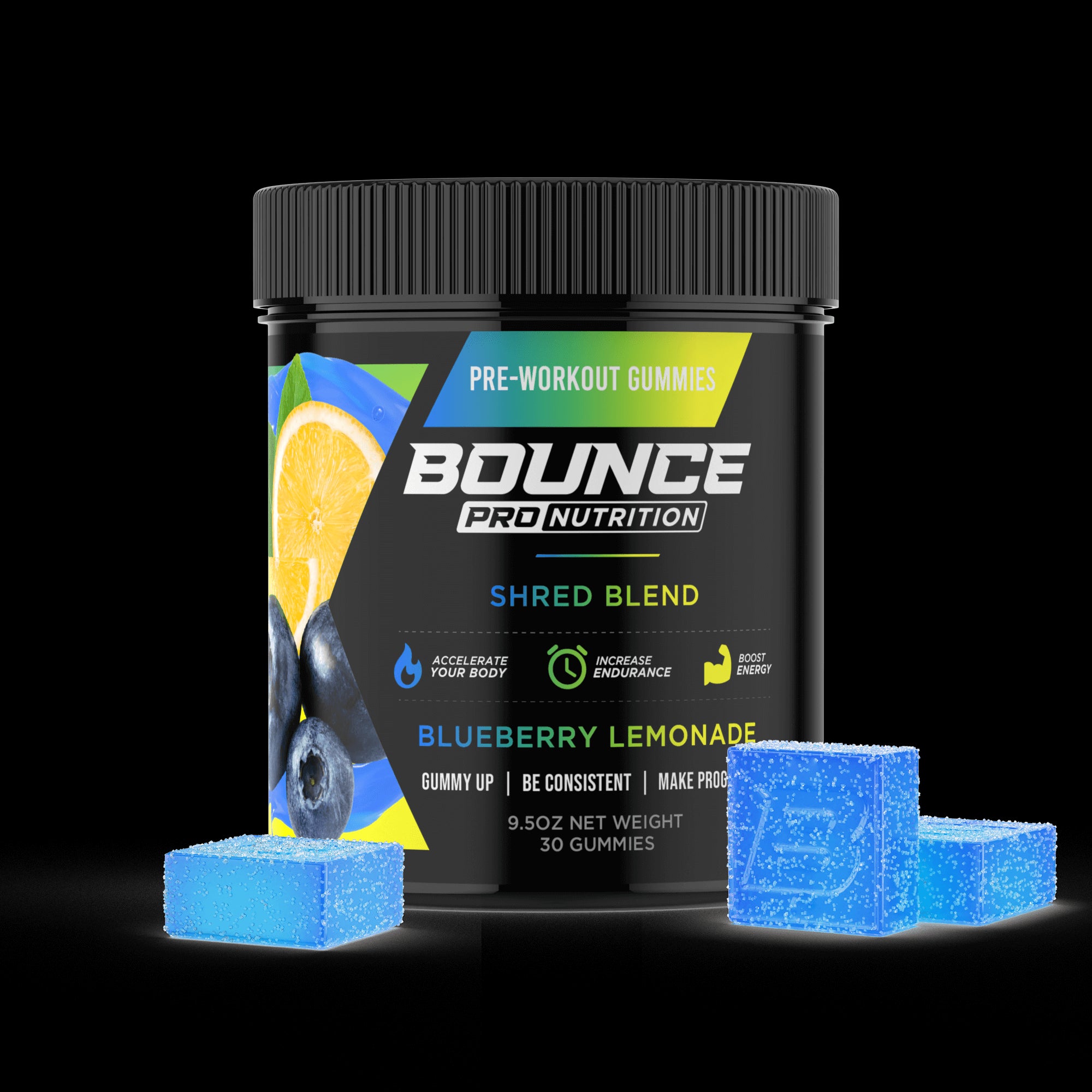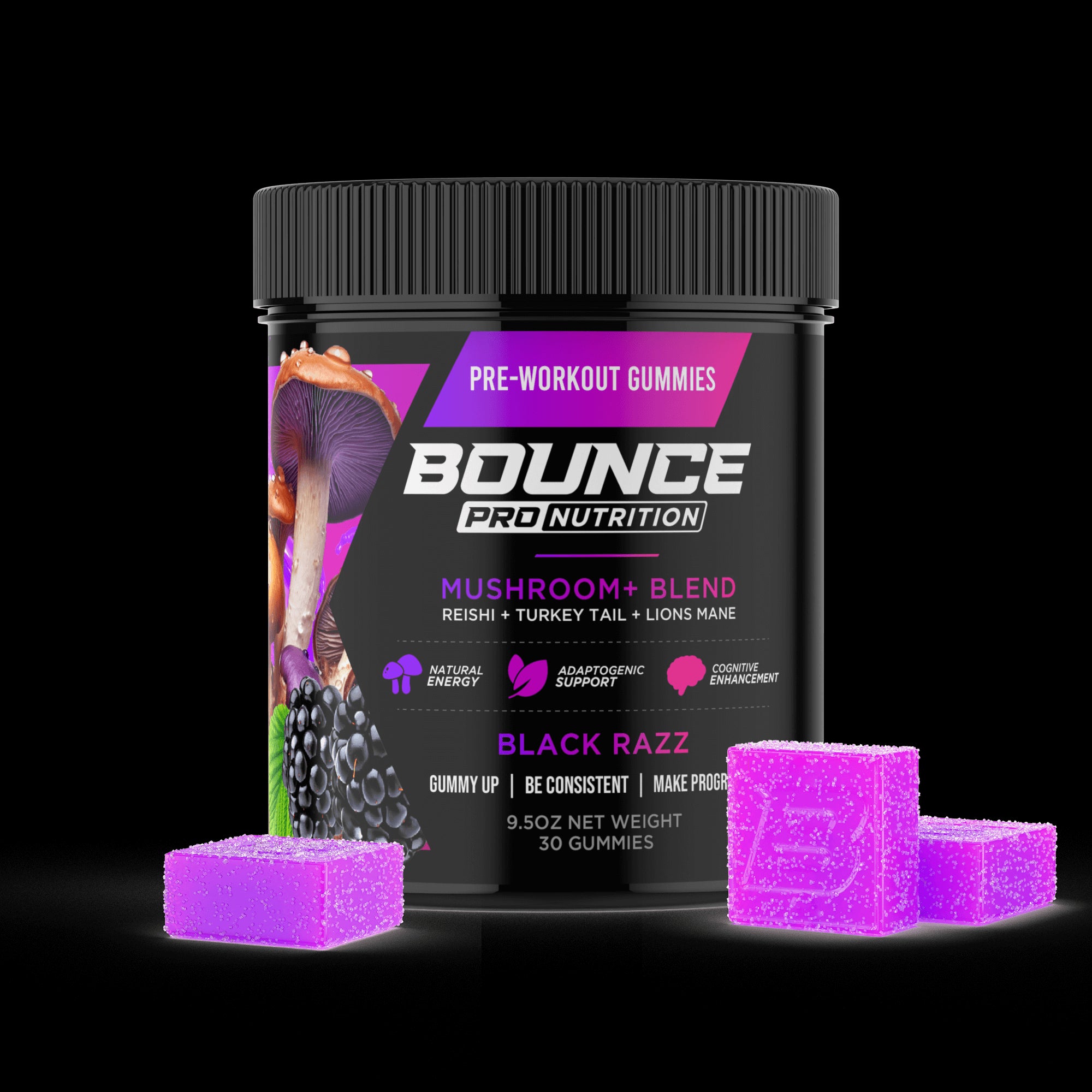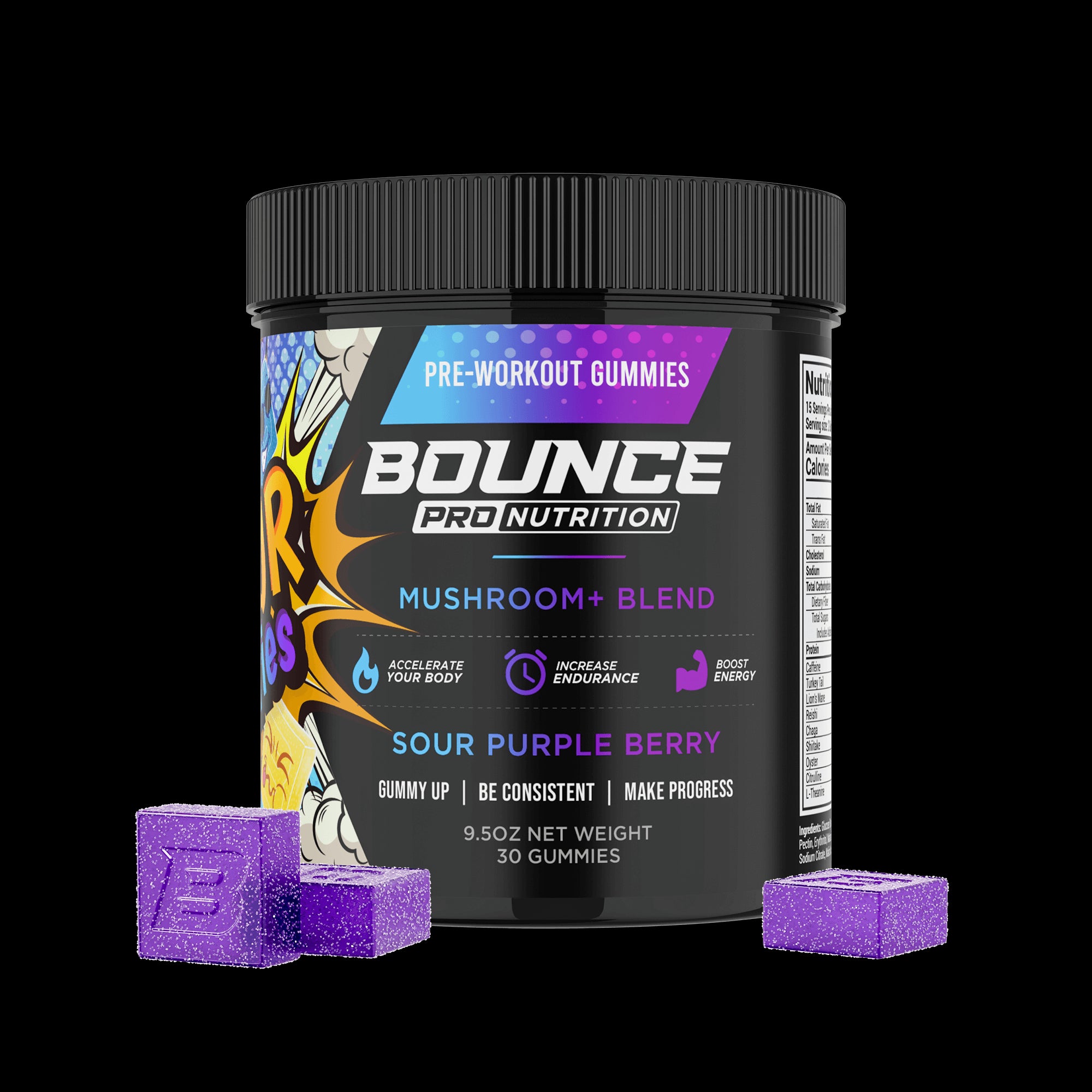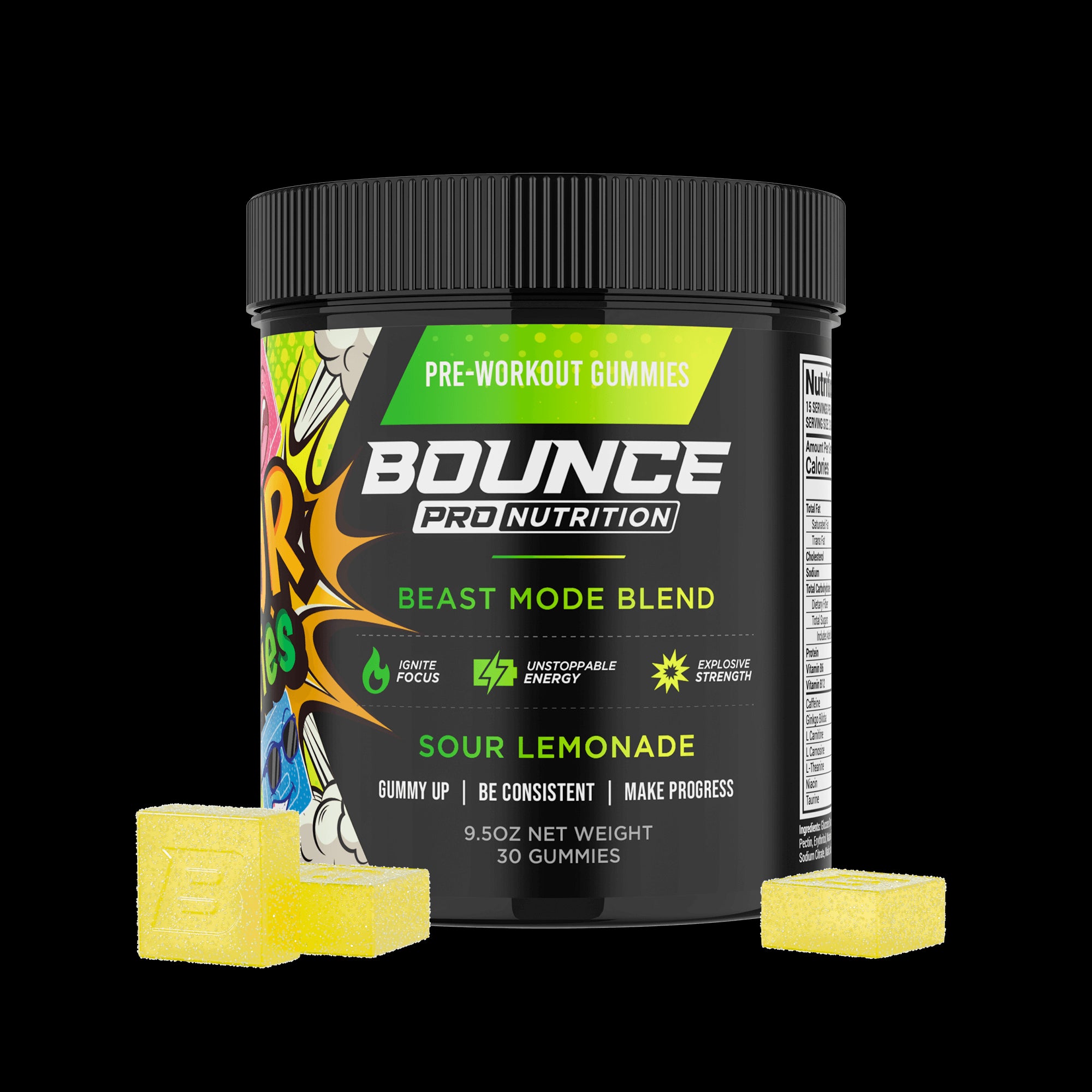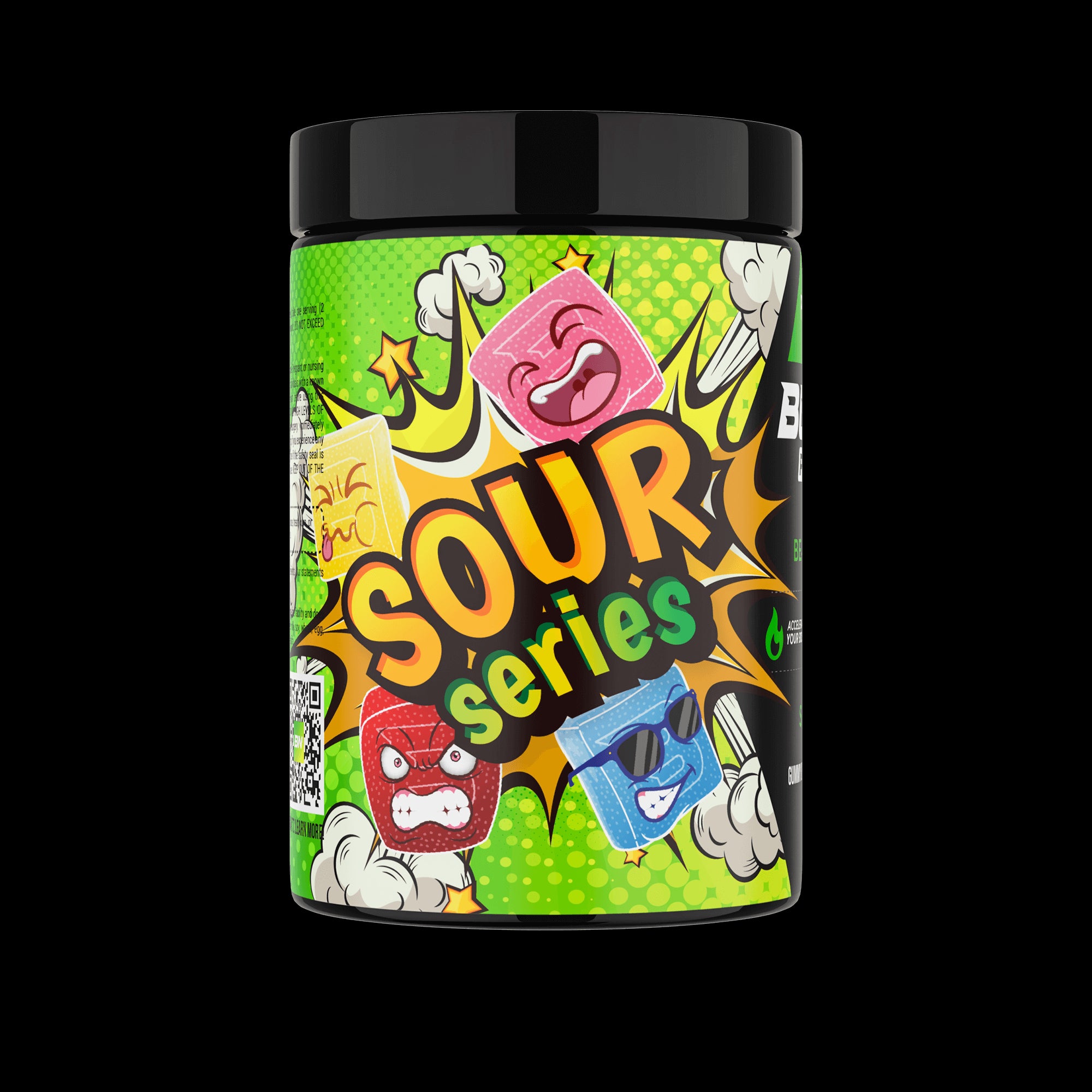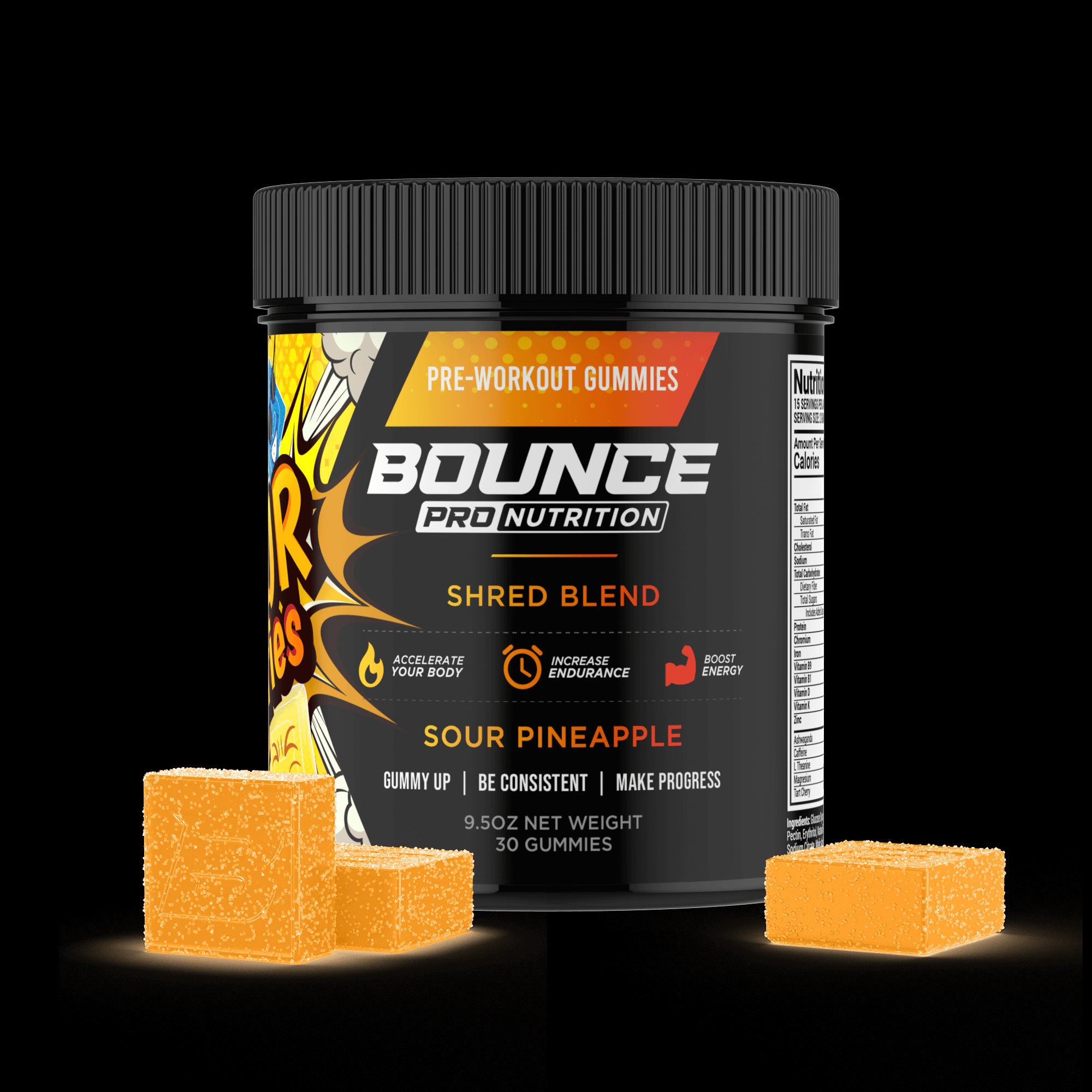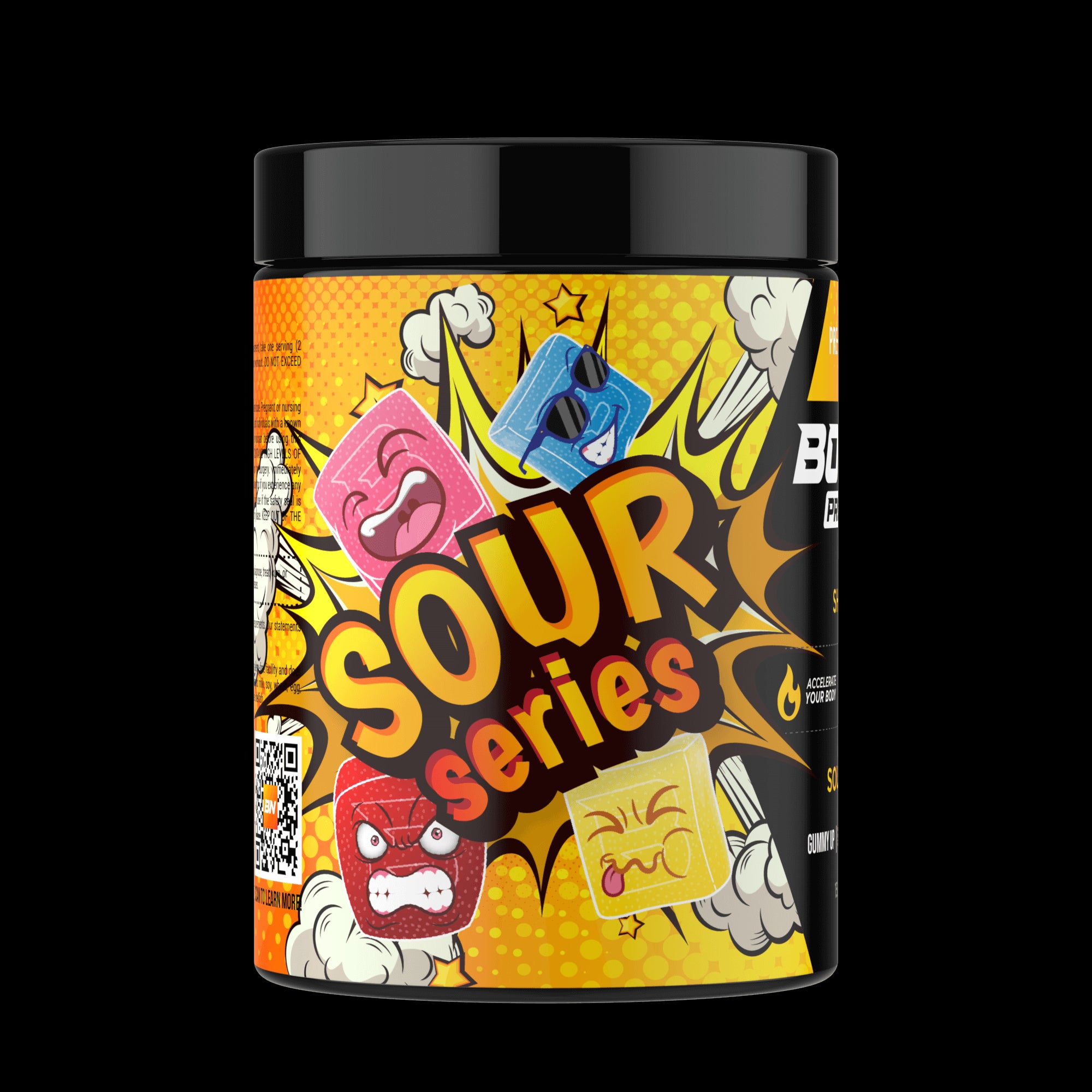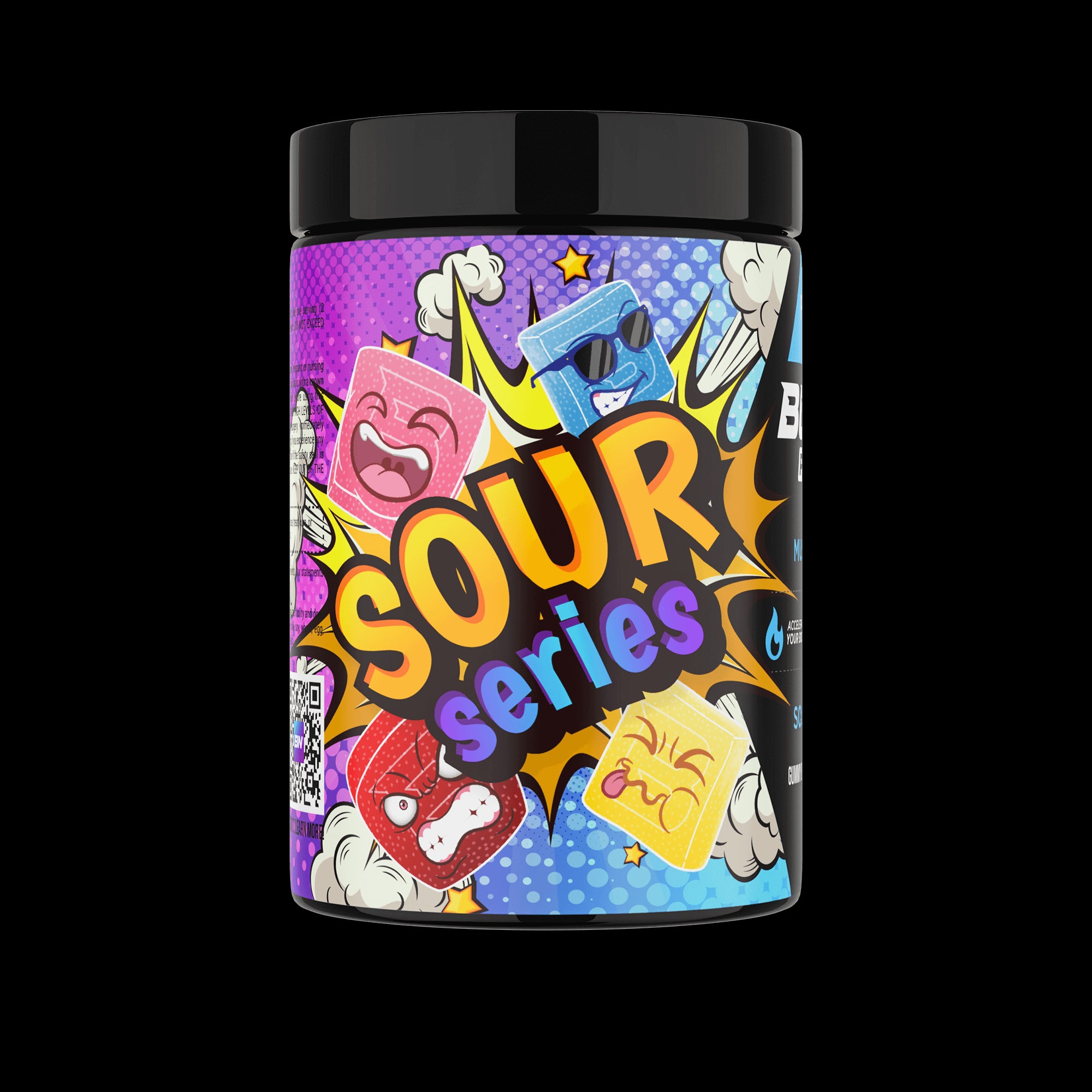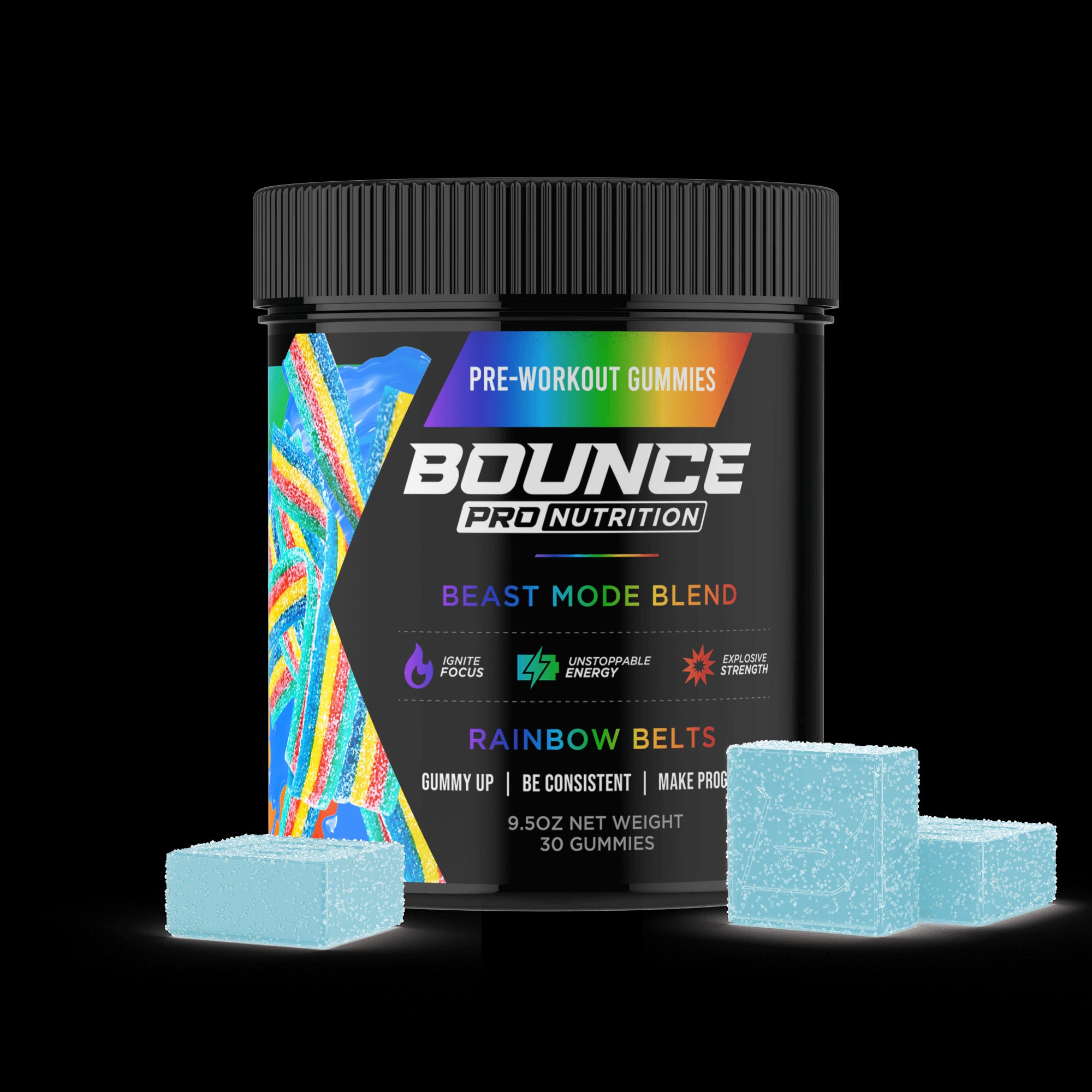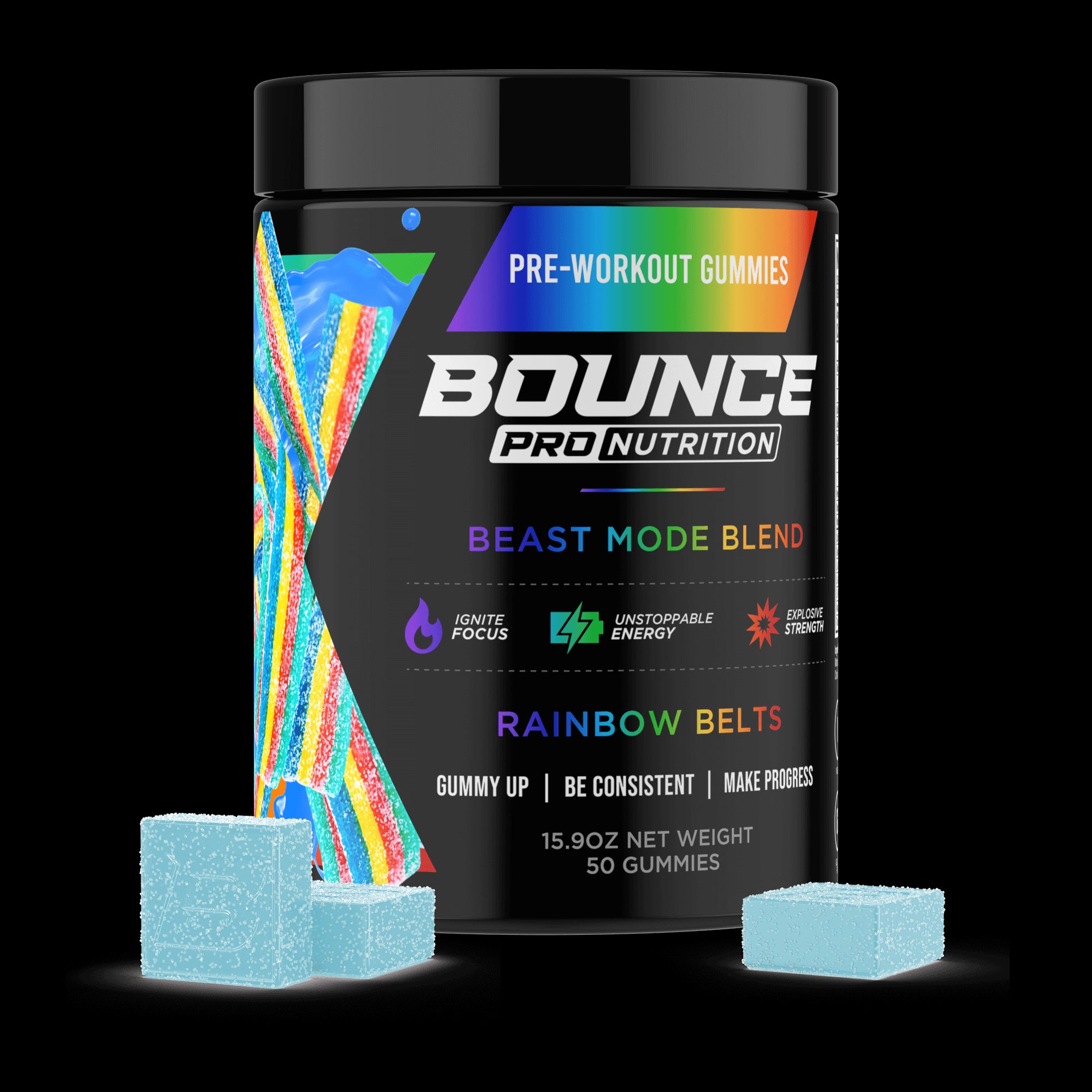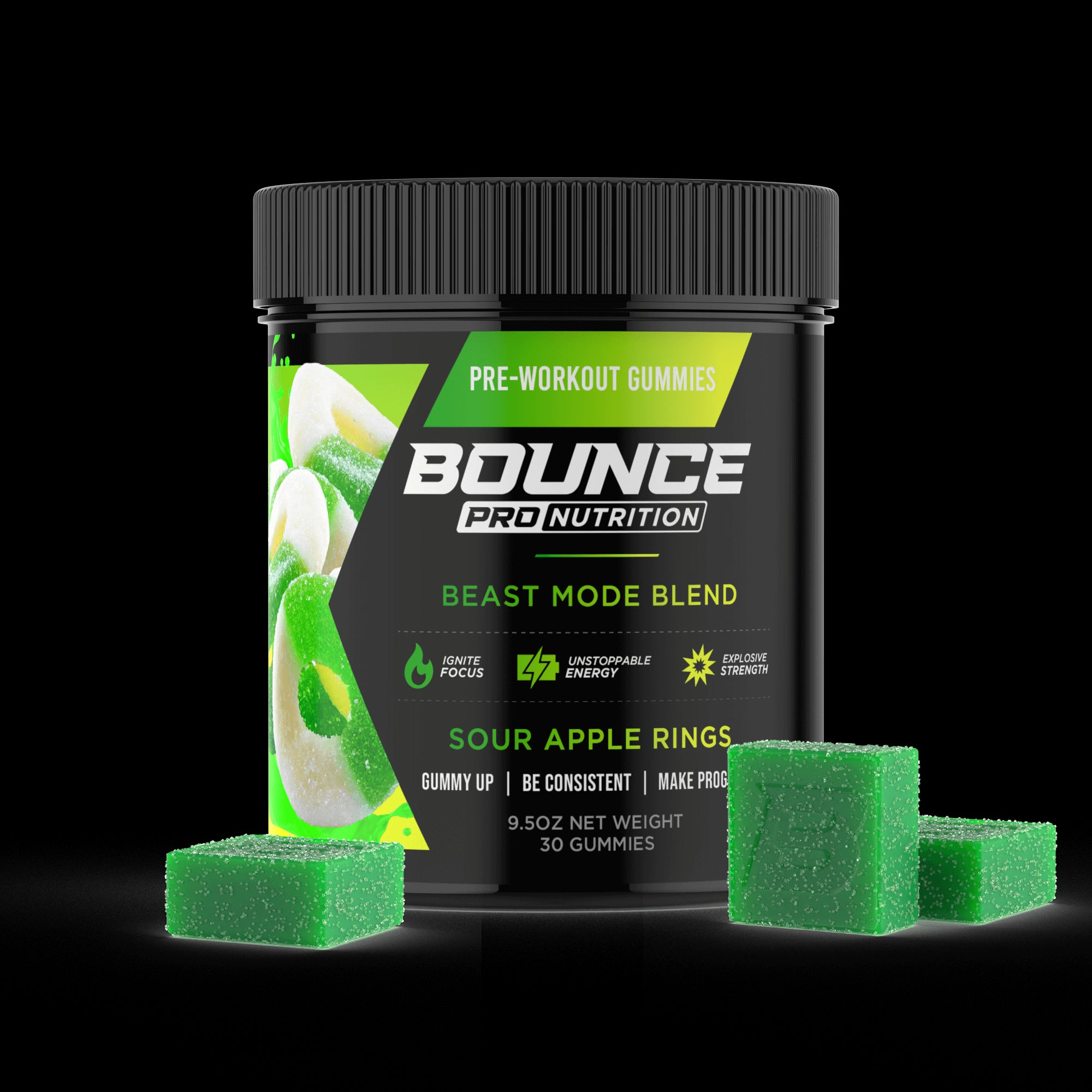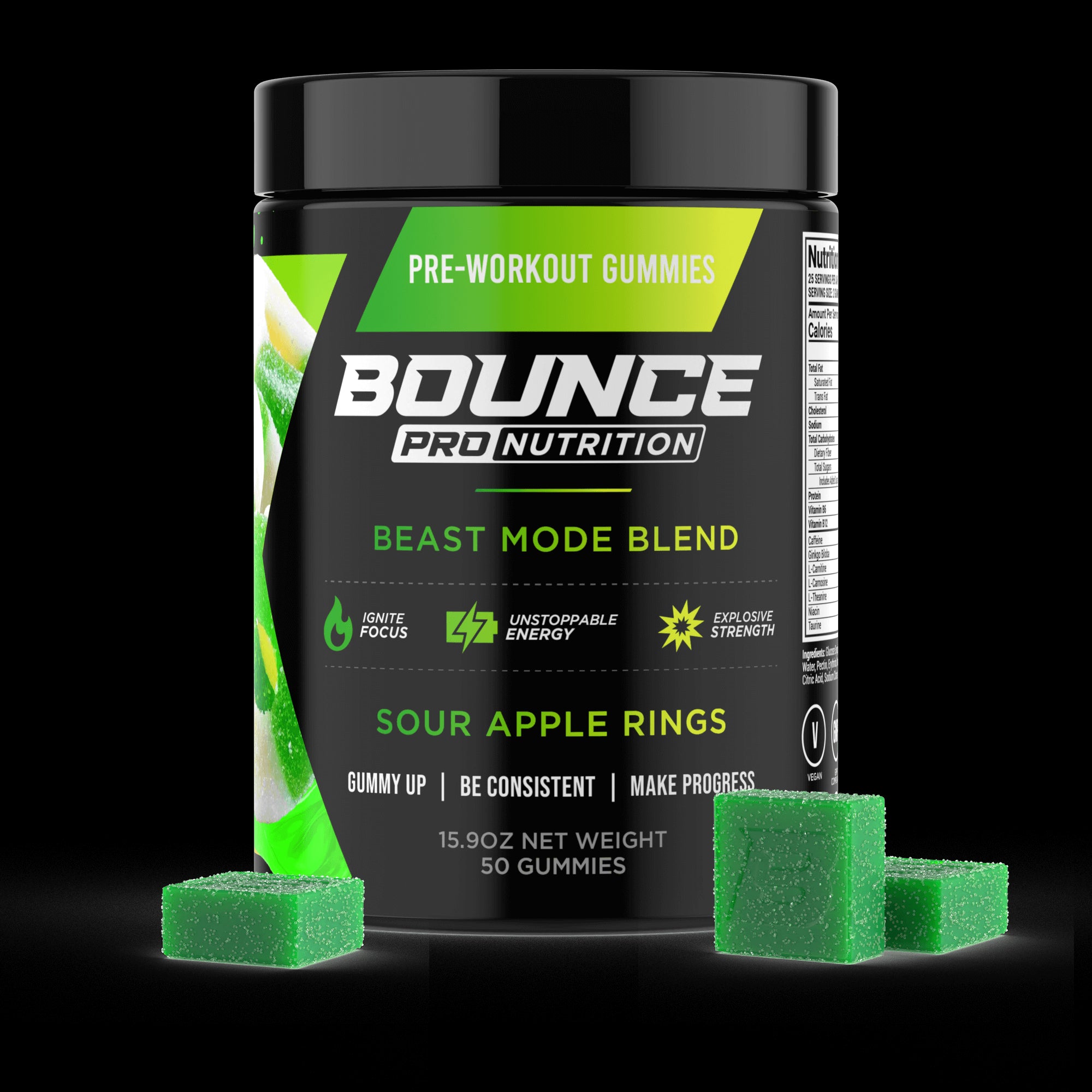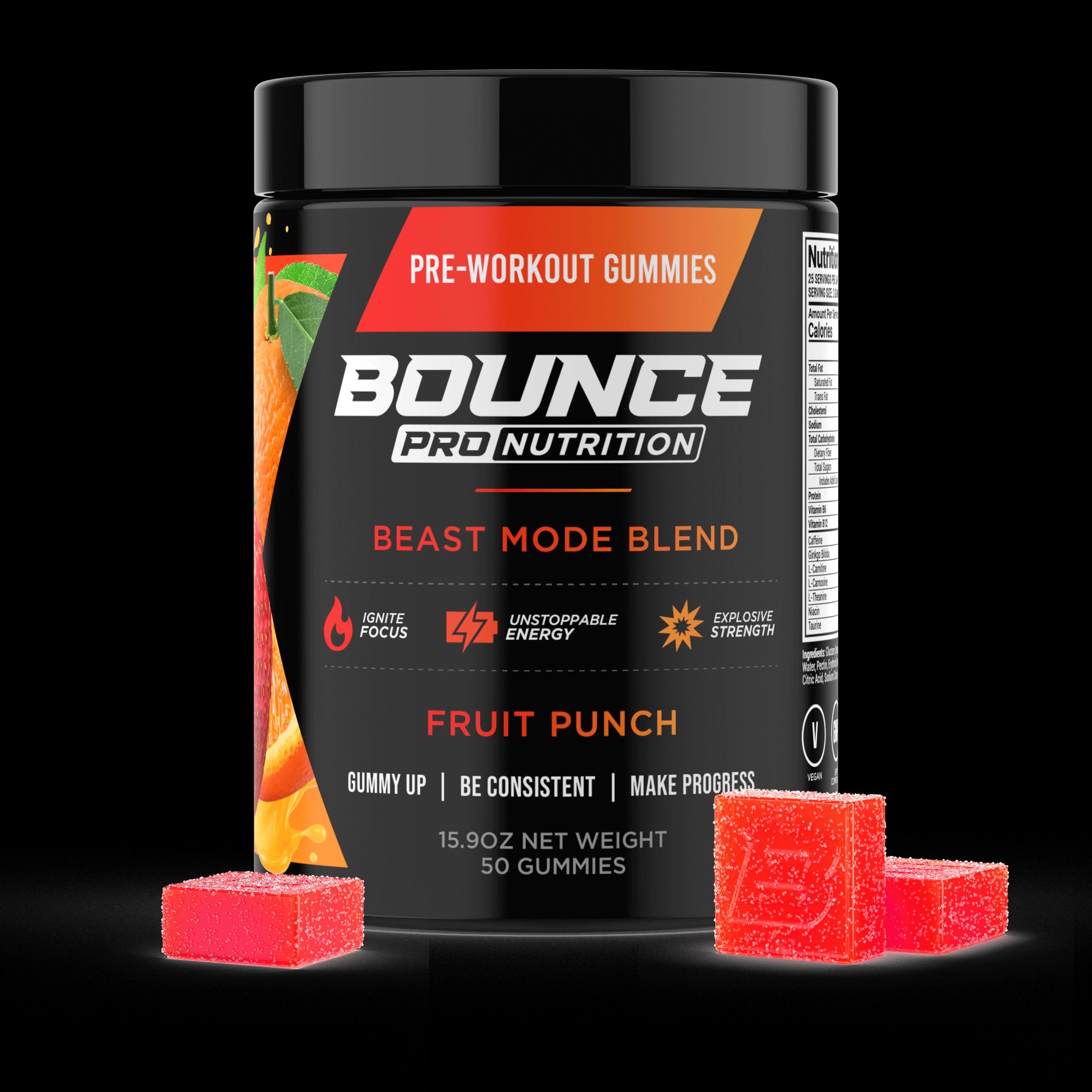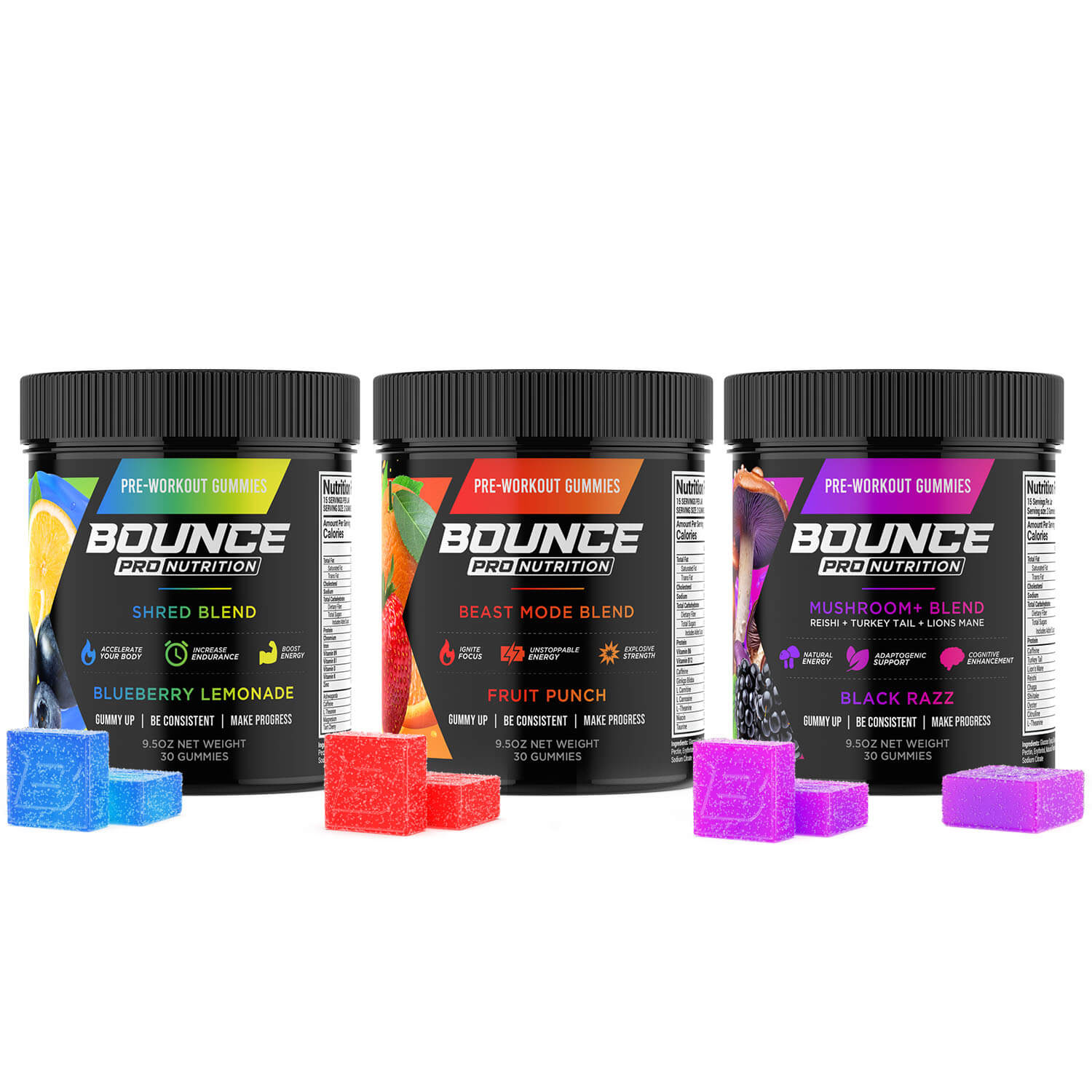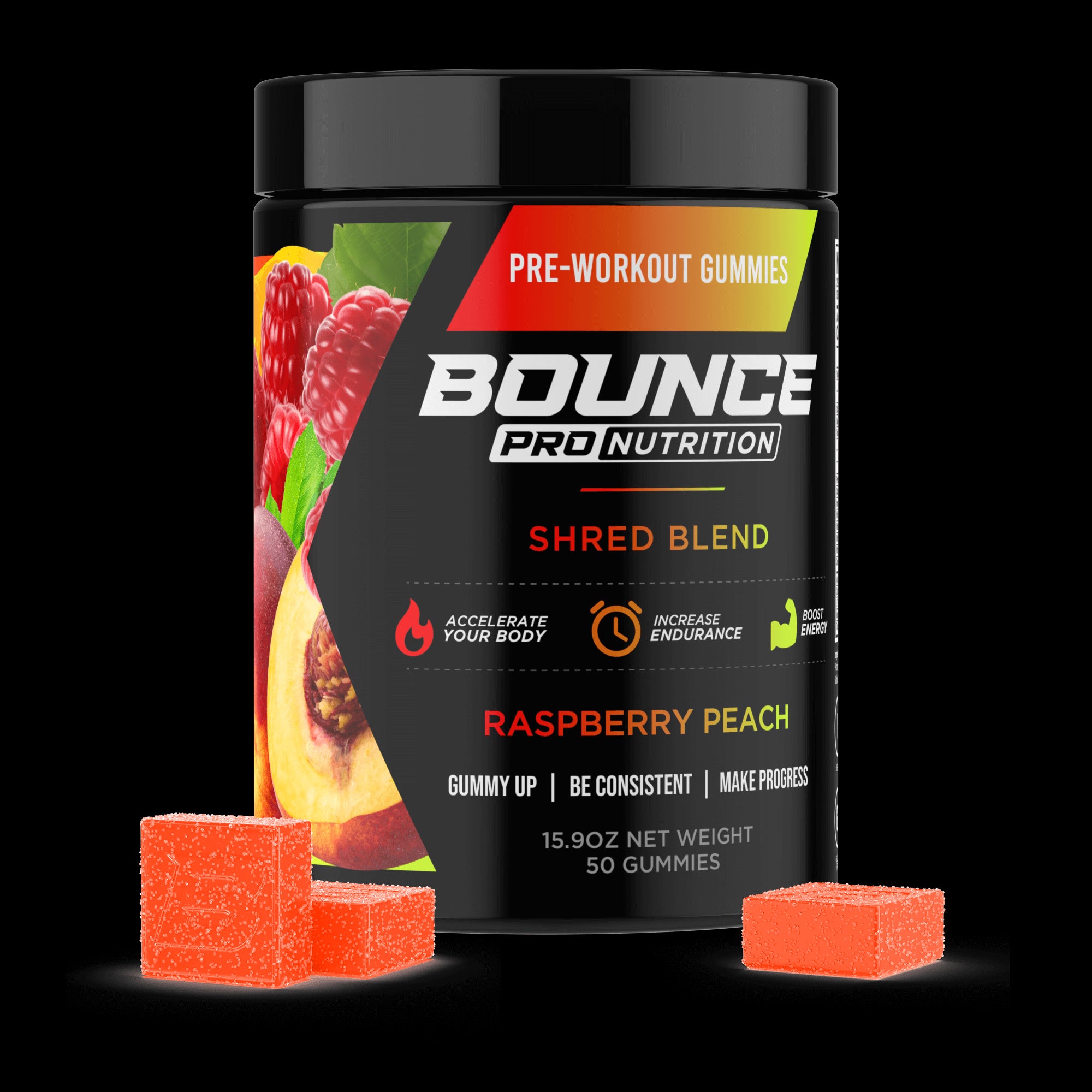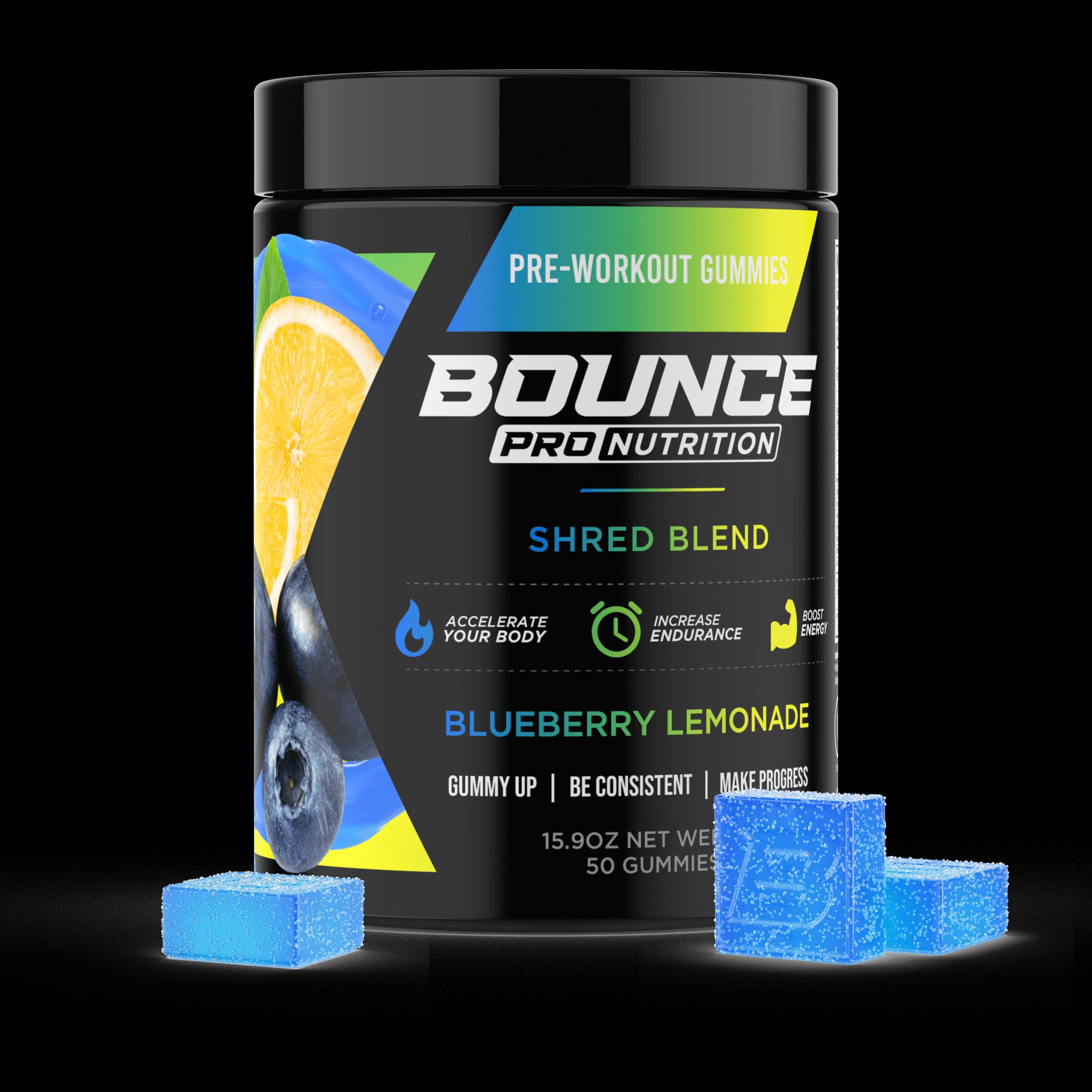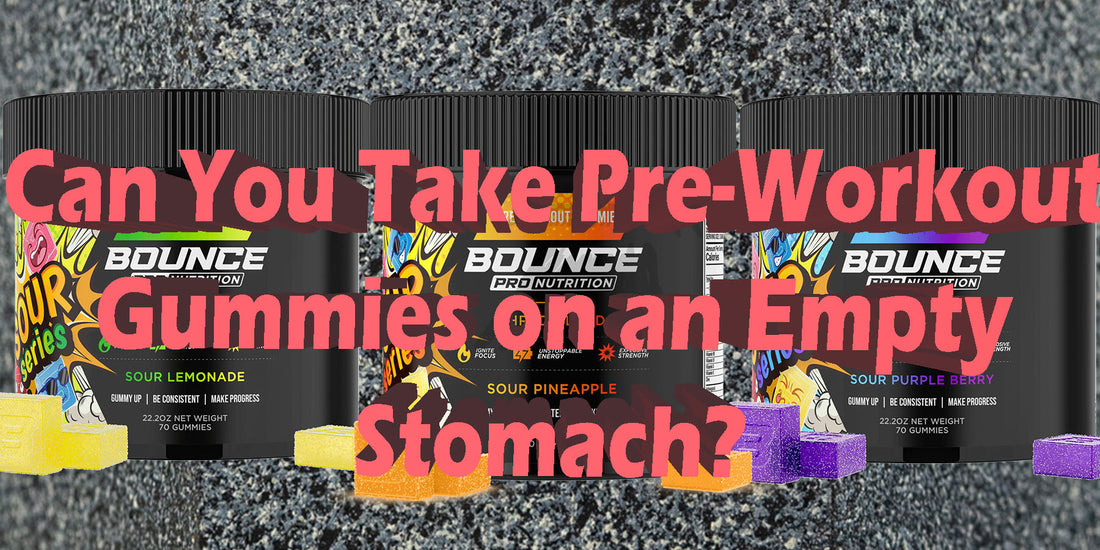The scene is a familiar one for dedicated fitness enthusiasts everywhere: the alarm clock blares in the pre-dawn darkness, your gym clothes are laid out, and a challenging workout looms. In the race against the clock, a critical question arises that pits efficiency against physiology—do you take the time to prepare and digest a meal, or do you simply grab your pre-workout gummies and head out the door?
This debate about training on an empty stomach is a cornerstone of gym locker room conversations and online forums. It represents a fundamental crossroads between the desire for a quick, potent energy boost and the uncertainty about potential side effects or diminished performance. And so, the answer isn’t a simple yes or no. It’s a nuanced decision that depends on your unique body, the type of workout you have planned, and the very ingredients inside those convenient, chewable gummies.
Hence, why we gotta move beyond simple anecdotes and conduct an honest investigation to determine if this common practice is a savvy shortcut or a potential pitfall.
TO BUY PRE-WORKOUT GUMMIES CLICK HERE
Everything You Gotta Know About Pre-Workout Gummies
Pre-workout gummies represent a significant and user-friendly innovation in the sports nutrition industry, fundamentally changing how individuals consume their pre-exercise formulas. They function by taking the essential, performance-supporting ingredients traditionally found in complex powders and encapsulating them into a convenient, palatable, chewable format.
This novel approach completely eliminates the need for mixing, shaking, or measuring, offering a straightforward and mess-free alternative that resonates with a modern, on-the-go lifestyle. The appeal is rooted not just in their simplicity but also in their candy-like nature, which makes taking a pre-workout feel less like a mundane task and more like a motivating treat. This evolution from a liquid-based supplement to a solid, edible one marks a user-centric shift in product design, prioritizing ease of use without compromising the intended functional benefits.
The history of the pre-workout gummy is a very recent but impactful story built upon the foundation of two larger market trends. While gummy vitamins first appeared in the 1960s, their application in the high-performance athletic sphere is a 21st-Century development. For decades, the pre-workout category was completely dominated by powders, which offered high potency and customization but often fell short in taste and convenience.
In the 2010s, the broader supplement industry embraced "gummification," turning everything from multivitamins to specialty nutrients into chewable forms. Visionary brands in the sports nutrition space saw this as the perfect solution to common user complaints about pre-workout powders, leading to the development of the first pre-workout gummies, designed to appeal to a new generation of fitness enthusiasts who value both performance and user experience.
The creation of pre-workout gummies is a sophisticated process that blends pharmaceutical-grade manufacturing techniques with the science of confectionery. It is a multi-step procedure meticulously designed to ensure that the active ingredients are evenly distributed, remain stable, and maintain their full potency within the final gummy product. The ultimate goal is to craft a supplement that is not only biologically effective but also has a consistent and enjoyable taste and texture. So, here’s how they’re typically made:
-
Ingredient Weighing and Blending: The process begins with the precise measurement of all active ingredients, such as L-citrulline, beta-alanine, caffeine, and various vitamins. These are then carefully blended with the other components of the gummy base, including sweeteners like corn syrup or sugar, a gelling agent like gelatin or the vegan alternative pectin, water, and specific flavor and color systems. This initial blending is critical for ensuring a perfectly homogenous mixture.
-
Cooking the Slurry: This blended mixture, now referred to as a "slurry," is gently heated in a large, specialized cooker. This step is essential for completely dissolving all the solid ingredients, activating the gelling agent, and achieving the exact consistency required for the perfect gummy texture. The temperature and cooking duration are tightly controlled to prevent any potential degradation of heat-sensitive active ingredients.
-
Depositing into Molds: Once the slurry has reached the optimal temperature and viscosity, it is transferred to a machine called a depositor. This equipment precisely injects the warm liquid into vast trays of food-grade starch that has been imprinted with the desired gummy shape. The starch mold prevents the pre-workout gummies from sticking and plays a key role in drawing moisture out as they begin to set.
-
Setting and Curing: The filled molds are then carefully moved into a climate-controlled room for curing. Here they will rest for 24 to 48 hours. During this crucial resting period, they cool down and set as the gelling agent solidifies and excess moisture evaporates, ultimately creating their characteristic chewy texture.
-
Demolding and Finishing: After the curing process is complete, the set pre-workout gummies are firm enough to be separated from their starch molds, often in a large tumbling drum. The starch is sieved out and recycled. The gummies are then lightly coated, often with carnauba wax or a light oil, to prevent them from sticking together in the final packaging and to give them an appealing gloss.
-
Quality Control and Packaging: Before being bottled, the finished gummies undergo a series of rigorous quality control tests. These laboratory analyses verify that the potency is accurate, that the product is pure, and that it is free from any contaminants. Once they pass inspection, they are packaged in airtight bottles or resealable pouches, sealed for freshness and safety, and prepared for distribution.
The pre-workout gummy market has rapidly diversified to accommodate a wide range of fitness goals, dietary needs, and personal preferences. It’s important to understand that not all pre-workout gummies are created equal; they can be broadly categorized based on their key ingredients and intended effects. This variety allows consumers to choose a product that aligns perfectly with their individual needs, whether they are seeking a powerful energy boost or a stimulant-free pump. Below are some of the main types you’ll encounter:
-
Energy-Boosting Gummies: These are the most common type and are what most people picture when thinking of a pre-workout. They contain stimulants, most notably caffeine, to provide an immediate and noticeable surge in energy, focus, and alertness before a workout.
-
Stim-Free Gummies: Catering to a growing demand, these gummies are formulated without any stimulants. They focus on ingredients that can enhance endurance, blood flow, and recovery, such as L-citrulline and beta-alanine, making them ideal for late-night workouts or for those sensitive to caffeine.
-
Adaptogenic Gummies: This newer category incorporates adaptogenic herbs like Ashwagandha or Rhodiola Rosea. These ingredients are included with the aim of helping the body manage physical and mental stress, potentially improving focus and resilience during challenging workouts.
-
Pump-Enhancing Gummies: These specialized pre-workout gummies are typically stimulant-free and are packed with nitric oxide boosters like L-citrulline or Agmatine Sulfate. Their primary purpose is to promote vasodilation, which increases blood flow to the muscles, leading to the "pump" sensation many lifters seek.
-
Flavor-Forward Gummies: While all gummies aim to be tasty, some brands make flavor their main selling point. These gummies prioritize the user's taste experience above all else, offering a wide variety of unique and enjoyable flavors to make pre-workout consumption a more appealing part of the fitness routine.
-
Natural/Plant-Based Gummies: Appealing to health-conscious consumers, these pre-workout gummies are formulated with vegan-friendly gelling agents like pectin (instead of gelatin) and often use natural flavors, colors, and sweeteners. They are designed to provide performance benefits while adhering to specific dietary choices.
Now, the intended effects of pre-workout gummies are a direct result of their active ingredients. When taken before exercise, these compounds work synergistically to prepare the body for physical exertion. Stimulants like caffeine are included to enhance mental alertness, sharpen focus, and increase energy levels, which can help reduce the perception of fatigue during a demanding workout. Ingredients such as beta-alanine are aimed at supporting muscular endurance by helping to buffer the acid that builds up in muscles during intense exercise.
Meanwhile, nitric oxide precursors like L-citrulline are included to promote vasodilation (the widening of blood vessels), which theoretically supports better blood flow and nutrient delivery to the muscles you are training. The combination of these effects is designed to improve overall workout performance.
Pre-workout gummies are primarily designed for the modern fitness consumer who places the highest premium on convenience, portability, and an enjoyable user experience. This includes individuals who dislike the taste or texture of traditional pre-workout powders or find the daily ritual of mixing shakes to be a hassle. They are a perfect solution for the busy professional who needs a quick, no-mess option to take on their way to the gym, or the frequent traveler who can easily pack a bottle of gummies.
The pre-portioned nature of each gummy also removes any guesswork in dosing, which makes them highly appealing to people who are new to supplements. Additionally, they are an excellent choice for anyone with a sensitive palate or an aversion to the often-strong flavors of powdered drinks.
What Should You Know About Working Out on an Empty Stomach, and is This Always Advisable to Do?
Working out on an empty stomach, often referred to as "fasted training", is a practice with a dedicated following in the fitness community. The most common scenario is the early morning workout, undertaken after an overnight fast and before breakfast. The primary appeal of this approach is often rooted in convenience and personal preference; some people simply feel sluggish or uncomfortable exercising after eating.
Others are drawn to it for its potential metabolic benefits, specifically the idea that it can enhance the body's ability to burn stored fat for fuel. During a fasted state, insulin levels are low and glycogen (stored carbohydrate) levels are partially depleted, which encourages the body to mobilize fatty acids as an energy source during lower-intensity exercise.
However, the advisability of fasted training is not a one-size-fits-all recommendation. While it can be a viable strategy for certain types of exercise, it can be counterproductive or even risky for others. For low-to-moderate intensity steady-state cardio, like jogging or cycling, fasted training is generally well-tolerated and may offer some fat-burning advantages.
The body can efficiently utilize fat for fuel during these less demanding activities. The calculus changes dramatically when the intensity ramps up. High-Intensity Interval Training (HIIT), heavy weightlifting, or any activity that requires explosive power relies heavily on readily available glycogen for energy. Attempting these demanding workouts in a fasted state can lead to a noticeable drop in performance, premature fatigue, and even feelings of dizziness or lightheadedness.
Therefore, the decision to train fasted should be a strategic one, informed by your goals and physiological feedback. It's crucial to understand that while your body can adapt to using fat for fuel, this process is less efficient for producing the rapid energy needed for top-end performance. For athletes whose primary goal is to lift heavier, run faster, or maximize their power output, training in a fueled state is almost always superior.
The presence of carbohydrates ensures that their muscles have the high-octane fuel required to perform at their peak. Fasted training can be a useful tool, but it must be applied to the right context and with a strong awareness of your body's signals. Ultimately, navigating the world of fasted training requires an honest assessment of your priorities and a commitment to listening to your body. There is no inherent magical benefit that makes it superior for all people in all situations.
For some, the convenience and feeling of lightness are paramount, while for others, peak performance is the only goal that matters. It is essential to approach this practice with caution, especially if you are new to it or have any underlying health conditions, particularly those related to blood sugar regulation. The key is to find the balance that allows you to train consistently, safely, and effectively, whether your stomach is empty or comfortably fueled.
The Impact of Food on Pre-Workout Effectiveness
The food you consume prior to your workout plays a profound and undeniable role in the effectiveness of any pre-workout supplement and your overall performance. The quality, quantity, and especially the timing of your pre-exercise meal can dramatically alter your energy levels, mental focus, muscular endurance, and even the speed of your recovery after the session is over.
A pre-workout supplement is not a magic potion that works in a vacuum; it is a tool whose power is either amplified or muted by the nutritional foundation you provide for it. Think of your body as a high-performance engine: the pre-workout gummy is the high-octane fuel additive, but the food you ate is the primary gasoline in the tank.
Eating a balanced meal that is rich in complex carbohydrates and contains a moderate amount of protein about one to two hours before your workout can provide a sustained release of energy, supporting both endurance and strength. This is especially critical for long-duration or high-intensity training sessions where your muscle glycogen stores will be heavily taxed for fuel.
On the flip side, consuming a large, heavy meal too close to your workout—particularly one that is high in fats or fiber—can be a significant performance inhibitor. These macronutrients slow down digestion, which can lead to feelings of sluggishness, bloating, and general digestive discomfort as your body tries to simultaneously digest food and pump blood to your working muscles, creating a physiological tug-of-war.
The specific macronutrient composition of your pre-workout meal can also directly impact how well the active ingredients in your pre-workout gummy can function. For example, some research suggests that combining a source of carbohydrates with caffeine can have a synergistic effect, potentially amplifying endurance and sharpening focus by enhancing the central nervous system's response to the stimulant.
A small, easily digestible meal can also help to buffer the stomach, which may reduce the risk of digestive upset from certain pre-workout ingredients, particularly for those with sensitive stomachs. Ultimately, your pre-workout meal and your pre-workout supplement are not two separate entities; they are partners in fueling your performance.
The Role of Proper Nutrition in Pre-Workout Fueling
The role of nutrition in fueling your body for exercise is foundational; it is the bedrock upon which any effective training and supplementation strategy must be built. The food you eat in the hours leading up to your workout directly dictates your energy availability, your capacity for physical output, and even the initial stages of your recovery process.
A pre-workout supplement is designed to enhance your performance, but it cannot create energy out of thin air. It works by unlocking and optimizing the potential that your nutritional preparation has already provided. Without adequate fuel in the tank, even the most potent pre-workout formula will fall short of its potential, as the body simply lacks the raw materials needed to perform at a high level.
Carbohydrates are the body's preferred and most efficient source of fuel for moderate-to-high intensity exercise. When you consume carbohydrates, they are broken down into glucose and stored in your muscles and liver as glycogen. During a challenging workout, your body rapidly draws upon these glycogen stores to produce the Adenosine triphosphate (ATP) needed for muscle contractions.
If you enter a workout with depleted glycogen stores due to inadequate nutritional intake, you are far more likely to experience premature fatigue, a drop in strength, and a phenomenon known as "hitting the wall." Therefore, ensuring you have consumed adequate carbohydrates provides the essential energy reserves needed to sustain performance and get the most out of the focus and endurance benefits offered by your pre-workout supplement.
While carbohydrates provide the primary fuel, protein also plays a crucial supporting role in pre-workout nutrition. Consuming a source of protein before training helps to create a positive nitrogen balance in the body, which can help to reduce muscle protein breakdown (catabolism) during your workout.
This essentially provides your muscles with a protective effect, ensuring that the stress of exercise leads to adaptation and growth rather than a net loss of tissue. Think of it as providing your muscles with the necessary building blocks to begin the repair process even before the workout is over. A well-formulated pre-workout meal, therefore, is not just about immediate energy; it's a proactive step towards a more efficient recovery.
Diving Further into the Connection of Pre-Workout and Fasting
The relationship between pre-workout supplementation and fasting is a topic of significant interest, especially with the widespread adoption of eating strategies like intermittent fasting (IF). This approach, which involves cycling between designated fasting and feeding windows, is often used for goals related to weight management and metabolic health.
For the many individuals who choose to align their training sessions with their fasting window, a critical question naturally arises: can you, and should you, take a pre-workout supplement while fasted, and does it ultimately help or hinder your goals and performance? The answer is nuanced and depends heavily on the type of training, the ingredients in the supplement, and an individual’s personal interpretation of what it means to “break a fast”.
When you train in a fasted state, your body, having lower insulin and glycogen levels, naturally shifts toward using stored body fat as a more significant fuel source. This can be desirable for those whose primary goal is to improve metabolic flexibility or enhance fat loss. However, this metabolic state is not always optimal for performance. High-intensity activities like heavy lifting, sprinting, or CrossFit-style workouts rely on the rapid availability of glucose for energy.
In a fasted state, performance in these areas can suffer due to the lack of readily available carbohydrates. In this specific context, a pre-workout supplement can act as a powerful tool to bridge that performance gap, allowing individuals to train with greater intensity than they might be able to in a completely fasted and unstimulated state.
For those adhering strictly to fasting protocols, the ingredients of the pre-workout become paramount. Many people choose to use zero-calorie or near-zero-calorie pre-workout formulas that are free of carbohydrates, sugars, or protein. Ingredients like caffeine, beta-alanine, and L-citrulline generally do not elicit a significant insulin response and are often considered "safe" to consume during a fasting window without technically breaking the fast, though this definition can vary from person to person.
Others may opt for a different strategy, timing their workout to occur just before their first meal. This allows them to take a full-spectrum pre-workout and then immediately follow their training session with a nutrient-rich meal to kickstart recovery, effectively getting the best of both worlds. Ultimately, integrating a pre-workout into a fasted training regimen is a personalized decision based on your specific goals, your tolerance for training without food, and how you define your fasting rules.
The Question at Hand: “Can I Take Pre--Workout Gummies Without Eating?"
So, we arrive at the core of the issue: can you take pre-workout gummies on an empty stomach? The short and direct answer is yes; you absolutely can. There’s no inherent danger in the act itself for most healthy individuals. However, the more important and nuanced question is should you do it, and what are the potential consequences?
The decision to consume these potent, chewable supplements without a preceding meal is not a simple one. It’s a strategic choice that should be informed by a variety of personal and situational factors, as the outcome can range from an enhanced workout to an uncomfortable and counterproductive experience.
One of the first factors to consider is your workout environment. The location of your training session can significantly influence the risk-reward calculation of taking pre-workout gummies on an empty stomach. If you are working out at home, for instance, the risks are relatively low. You are in a controlled, safe environment where if you suddenly feel lightheaded, nauseous, or jittery from the supplement, you can easily stop, sit down, and grab a quick snack to stabilize yourself.
However, if heading out for a long run on a remote trail or driving to a gym that’s far from home, the stakes are higher. Experiencing a sudden drop in blood sugar or intense side effects in these situations can be not only inconvenient but potentially unsafe, making a pre-workout meal a much wiser choice.
The nature of your planned workout for the day is another critical piece of the puzzle. The type of physical activity you are about to undertake should heavily influence your fueling strategy. If your plan is to engage in low-to-moderate intensity steady-state cardio, such as a light jog on the treadmill or a session on the elliptical, taking pre-workout gummies on an empty stomach is often well-tolerated and may even feel preferable.
But if your workout involves heavy, neurologically demanding compound lifts like squats and deadlifts, or an all-out High-Intensity Interval Training (HIIT) session, going in without any fuel in the tank is a far riskier proposition. These activities demand a high level of readily available energy, and performance can suffer significantly without it, which could also increase the risk of injury due to fatigue-induced breakdowns in form.
Plus, going back to the specific type of pre-workout gummy being taken has a massive part in this decision. Not all gummies are formulated equally, and their ingredients will interact with your empty stomach in different ways. Below is a breakdown of how different types might affect you:
-
High-Stimulant Gummies: Taking a gummy that is high in caffeine or other potent stimulants on an empty stomach can lead to a much more rapid and intense absorption of those ingredients. For some people, this might feel like a powerful, desirable kick. For many others, especially those with a sensitivity to stimulants, this can result in overwhelming jitters, anxiety, nausea, or a rapid heartbeat, ultimately detracting from the quality of the workout.
-
Stim-Free "Pump" Gummies: These pre-workout gummies, which focus on nitric oxide boosters like L-citrulline, are generally much better tolerated on an empty stomach. Since they lack the central nervous system stimulants that often cause digestive upset or anxiety, they are a much safer choice for fasted training. The primary effect is enhanced blood flow, which does not typically cause the same level of gastrointestinal distress.
-
Gummies with Adaptogens: Gummies containing ingredients like Ashwagandha are also generally well-tolerated without food. These compounds are not stimulants and are designed to help modulate the body's stress response. Taking them on an empty stomach is unlikely to cause acute side effects, though some herbal ingredients can cause mild stomach upset in very sensitive individuals.
-
Gummies with Carbohydrates: It is important to remember that most pre-workout gummies inherently contain some form of sugar or carbohydrates to give them their taste and texture. While this small amount of sugar technically means you are not completely "fasted," it can be beneficial. These simple carbs can provide a small, rapid source of energy and may help to buffer your stomach against some of the other active ingredients, potentially making them easier to tolerate than a zero-calorie powder.
Ultimately, the most important factor is how your individual body reacts to this practice. Each person's physiology is unique, with different levels of stimulant sensitivity, digestive health, and metabolic flexibility. The only way to truly know if taking pre-workout gummies without eating works for you is through careful, personal experimentation. It is crucial to be attentive to the signals your body sends.
If you experience persistent nausea, dizziness, heart palpitations, or an overwhelming feeling of anxiety, it is a clear sign that your body requires some food as a buffer. The goal is to find a strategy that makes you feel strong, focused, and comfortable, allowing the pre-workout to enhance your training session rather than derail it.
Timing Your Pre-Workout Intake for Optimal Performance
Understanding the "what" and "why" of pre-workout nutrition is only half the battle; mastering the "when" is just as critical for unlocking your full potential. Proper timing ensures that the nutrients from your food and the active ingredients from your supplements are fully absorbed, metabolized, and available right when your muscles need them most—during your workout. This strategic approach to timing can be the difference between a good workout and a great one. The key is to coordinate your meals and your supplements, so they work in harmony, not against each other, based on their different digestion and absorption rates.
As a general rule, you should plan your intake based on the substance's complexity, as this would be the simple framework for optimal timing:
-
Supplements: You should aim to take your pre-workout gummies approximately 30 to 60 minutes before you begin your training session. This window provides enough time for the active ingredients—especially stimulants like caffeine and performance aids like beta-alanine—to be digested, enter your bloodstream, and reach peak levels of effectiveness. This ensures the energy, focus, and endurance benefits arrive as you start your first working set, not halfway through your workout.
-
Light Meals or Snacks: If you opt for a small, easily digestible pre-workout snack, consuming it 60 to 90 minutes before training is ideal. This timeframe is perfect for quick-digesting carbohydrate and protein combinations like a rice cake with peanut butter, a banana, or a small bowl of yogurt with fruit. It allows enough time for initial digestion so you don't feel overly full, while still providing a steady stream of energy for your workout.
-
Substantial Meals: A larger, more complex meal should be consumed at least 2 to 3 hours before you plan to exercise. This is especially true if the meal contains a significant amount of healthy fats and fiber, as these macronutrients take much longer for the body to break down and digest. Eating a substantial meal too close to your workout can divert blood flow to your digestive system instead of your muscles, leading to cramps and sluggishness.
Lastly, it is imperative to remember that these timelines are excellent starting points, but they must be adjusted based on personal factors. Your individual metabolism, the planned intensity of your workout, and your unique sensitivity to stimulants can all impact your optimal timing decisions. Some people may find they feel best training in a fasted state with just a pre-workout, while others discover they need a full meal two hours prior to feel strong and steady in the gym. The best approach is to experiment with these windows and listen to your body's feedback to discover what works best for you.
Common Myths About Taking Pre-Workout on an Empty Stomach
The practice of fasted training and taking pre-workout supplements like gummies on an empty stomach is surrounded by a host of myths and misconceptions. This often leads to confusion about the best practices for safe and effective supplementation. It's important to separate the scientific facts from the gym-floor fiction to make informed decisions about your own fueling strategy. Let's debunk some of the most common myths, shall we.
Myth #1: Taking Pre-workout on an Empty Stomach Makes It "Stronger"
This is one of the most pervasive myths, and it stems from a misunderstanding of absorption speed versus actual strength. While taking a pre-workout without food does allow the stimulants to be absorbed more rapidly, this does not make the product inherently "stronger." Instead, it often leads to a much sharper, more aggressive peak in effects, which can be perceived as overwhelming anxiety or jitters for many people.
A more gradual absorption, buffered by a small meal, often results in a smoother, more sustained energy curve that is far more productive for a focused, high-quality workout. Faster is not always better.
Myth #2: You Will Burn Significantly More Body Fat if You Train Fasted
While it is true that your body may utilize a higher percentage of fat for fuel during a low-intensity workout when you are in a fasted state, this does not necessarily translate to greater overall fat loss over time. The most important factor for losing body fat is maintaining a consistent calorie deficit over a 24-hour period. Research has shown that when total daily calories and protein are equated, the difference in total fat loss between those who train fasted and those who train fed is negligible. The feeling of enhanced fat burning during the session does not automatically mean more fat loss in the long run.
Myth #3: There’s Possibility of losing All Your Muscle if You Train on an Empty Stomach
The fear of muscle catabolism (breakdown) during fasted training is often exaggerated for the average person's workout. For a typical training session lasting 60-90 minutes, the amount of muscle protein breakdown is not usually significant, especially if you have consumed adequate protein in the preceding day. The body is resilient and has other energy stores to pull from before it begins to substantially break down muscle tissue for fuel. This myth becomes a more valid concern only in the context of very prolonged, endurance-style exercise lasting multiple hours without any nutritional intake.
Myth #4: Any Food Eaten Prior to a Workout Will Just Sit in Your Stomach and Make You Sluggish
This myth is only true if you make poor food choices. While a large, high-fat, high-fiber meal consumed right before a workout will certainly lead to digestive distress and sluggishness, this is not true for all foods. A small, easily digestible snack composed of simple carbohydrates and a little protein can be broken down and utilized by the body very efficiently. A banana or a handful of dates can provide a quick source of energy that fuels your workout without weighing you down, actively working against sluggishness rather than causing it.
Key Potential Pros & Cons of Taking Pre-Workout Gummies Without Eating
Deciding whether to take your pre-workout gummies on an empty stomach is a personal choice with a distinct set of potential advantages and disadvantages. There’s no universally correct answer, so it's beneficial to weigh the pros and cons based on your own body and goals.
Potential Pros
These would be the possible upsides if you chose to do this:
-
Faster Onset of Effects: Without any other food to slow down digestion, the active ingredients in the pre-workout gummies can be absorbed into your bloodstream more rapidly. This means you may feel the energizing and focusing effects of the supplement much quicker, which is ideal if you are short on time before your workout.
-
Potential for Enhanced Fat Oxidation: For those engaging in lower-intensity cardio, training in a fasted state may encourage the body to utilize a greater percentage of stored body fat as its primary fuel source during the session. This can be appealing for individuals with specific fat loss or metabolic flexibility goals.
-
Convenience for Early Morning Workouts: For people who exercise very early in the morning, the thought of preparing, eating, and digesting a meal can be a significant logistical hurdle. Simply taking a few pre-workout gummies is a much faster and more convenient option that allows them to get to their workout without delay.
-
No Feeling of Digestive Sluggishness: One of the main reasons people prefer fasted training is to avoid the feeling of being full or bloated during exercise. Taking gummies on an empty stomach ensures that your digestive system is not heavily taxed, allowing you to feel light and agile during your workout.
-
Increased Mental Clarity and Focus for Some: Some individuals report a heightened sense of mental clarity and focus when they train in a fasted state. The combination of the body's natural hormonal state during fasting and the nootropic ingredients in a pre-workout can sometimes lead to a very sharp and distraction-free mental state.
Potential Cons:
These would be the possible downsides if you go this route:
-
Increased Risk of Digestive Upset: The most common drawback is gastrointestinal distress. The concentrated ingredients, particularly stimulants and certain artificial sweeteners in the pre-workout gummies, can irritate the stomach lining when consumed without a food buffer, leading to nausea, cramping, or an urgent need to use the restroom.
-
Potential for Overwhelming Jitters and Anxiety: The rapid absorption of stimulants on an empty stomach can lead to a much more intense and spiky effect. This can easily cross the line from productive energy into overwhelming anxiety, jitters, or heart palpitations, which can ruin your focus and the overall quality of your workout.
-
Risk of Hypoglycemia or "Bonking": For workouts that are long in duration or high in intensity, your body requires readily available glucose. Without pre-workout fuel, you run a higher risk of depleting your glycogen stores and experiencing hypoglycemia (low blood sugar), which can cause dizziness, weakness, and a sudden crash in energy, often called "bonking."
-
Potential for Reduced Top-End Performance: While fasted training is fine for lower intensities, it can significantly hinder your ability to perform at your peak. For strength, power, and high-intensity sprints, having carbohydrates available as fuel is critical for maximizing your output. You may find you cannot lift as heavy or push as hard on an empty stomach.
-
May Mask Important Hunger Cues: Regularly using a powerful, appetite-blunting pre-workout on an empty stomach can sometimes mask your body's natural hunger signals. Over time, this could potentially lead to under-fueling, which can negatively impact your long-term recovery, hormonal health, and overall energy levels outside of the gym.
A Quick Word on Bounce Nutrition Pre-Workout Gummies
At Bounce Nutrition, we aimed to set ourselves apart from the competition with the best tools in our arsenal: a deep understanding of quality ingredients, safety precautions, strict testing protocol, and impressive flavoring methods to ensure only absolute satisfaction for your pre-workout needs. Our new and improved V2 Gummy: twice the size as our original, 10x the flavor, and a ton more beneficial ingredients come in three different options:
-
Beast Mode Gummies are formulated to provide you with the explosive energy and strength needed to tackle intense lifting sessions. Essentially, these gummies are for heavy or intense workouts, increasing strength, breaking records, those with high tolerance for caffeine, and even those who want results while handling some punch in the gummies.
-
Shred Blend Gummies are formulated to provide you with the explosive energy and strength needed to tackle intense lifting sessions. Essentially, these gummies are for not falling Oof end of workout, consistent energy & reducing fatigue, supersets or HIIT, and even those looking for the perfect mix of potency and flavor.
-
Mushroom+ Pre-Workout Gummy is made with a blend of mushroom extracts, that are known for their apoptogenic properties. Essentially, these gummies are for improving focus & mental clarity, everyday use, muscle recovery, reducing fatigue post-workout, anyone for the most part who’s sensitive to caffeine but still desires effective results, those who prefer a smoother flavor with less bite, those who prefer a smoother flavor with less bite, and pairing with Shred or Beast Mode gummies.
When you select any of these Pre-Workout Gummies, simply count on taking your fitness experience to the next level.
Overall, There are Considerations to Fueling Up Prior to Working Out or Opting for Fasted Training
Ultimately, the debate between a fueled pre-workout gummies and a fasted one is not about finding a single, universal truth, but about appreciating the power of personalized nutrition. Your body is a unique and complex system, and the optimal fueling strategy is the one that allows you to feel strong, focused, and consistently perform at your best. Viewing this choice not as a rigid set of rules, but as a flexible set of tools, empowers you to adapt your approach based on the day's demands.
A light, fasted session might be perfect for a recovery day, while a heavy lifting session will almost certainly benefit from strategic fueling. The real goal is to become an expert on your own body, using the principles of timing and nutrition to create a pre-workout ritual that is both enjoyable and undeniably effective.


